France
Paris
Switch to your local agency
Retour au menu
Consumer expectations constantly evolve, and new culinary trends are emerging on the gastronomic scene. Today, the quest for protein-rich foods is no longer confined to athletes but has become an important purchasing criterion for the general public.
By 2024, 19% of Americans would like to increase their protein intake, a preference that ranks third after fruits and vegetables. Additionally, over 50% believe that protein content is the most important nutritional factor when purchasing snacks. (Stylus Natural Expo West 2024 report)
Consumer expectations constantly evolve, and new culinary trends are emerging on the gastronomic scene. Today, the quest for protein-rich foods is no longer confined to athletes but has become an important purchasing criterion for the general public.
By 2024, 19% of Americans would like to increase their protein intake, a preference that ranks third after fruits and vegetables. Additionally, over 50% believe that protein content is the most important nutritional factor when purchasing snacks.
This trend is also confirmed on social networks, making nutritional education accessible and “democratizing” the protein, by no longer associating it exclusively with sporting performance. The pandemic has also raised awareness of the importance of physical and mental health. Online content, such as workouts and recipes at home, have contributed to this transformation of mentalities. Well-being comes first, and we say yes to protein!
Faced with the increasing popularity of this new trend, food brands are now offering alternatives that can be enjoyed at any time, not just in the context of sports performance.
This trend is also confirmed on social networks, making nutritional education accessible and “democratizing” the protein, by no longer associating it exclusively with sporting performance. The pandemic has also raised awareness of the importance of physical and mental health. Online content, such as workouts and recipes at home, have contributed to this transformation of mentalities. Well-being comes first, and we say yes to protein!
Faced with the increasing popularity of this new trend, food brands are now offering alternatives that can be enjoyed at any time, not just in the context of sports performance.
Magic Spoon offers cereal-based snacks with a high protein content (between 11 to 13%) that can be enjoyed throughout the day. The packaging is inspired by the nostalgia of the cereals we used to eat on Saturday mornings while watching our favorite cartoons. It is colorful and fun, catching the eye and curiosity of consumers, and encouraging them to make a purchase. The protein content is prominently displayed on the packaging, providing reassurance to the consumer.
New players are entering the market, yet the leading players in the food industry have not finished surprising us!
Credit: Magic Spoon
Magic Spoon offers cereal-based snacks with a high protein content (between 11 to 13%) that can be enjoyed throughout the day. The packaging is inspired by the nostalgia of the cereals we used to eat on Saturday mornings while watching our favorite cartoons. It is colorful and fun, catching the eye and curiosity of consumers, and encouraging them to make a purchase. The protein content is prominently displayed on the packaging, providing reassurance to the consumer.
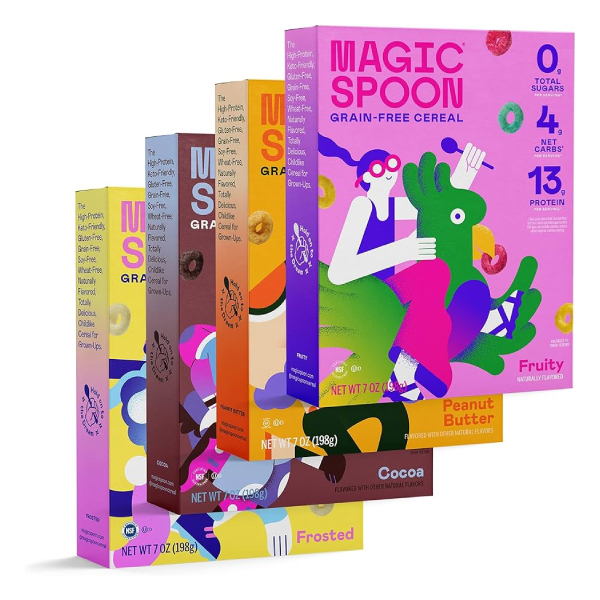
Magic Spoon offers cereal-based snacks with a high protein content (between 11 to 13%) that can be enjoyed throughout the day. The packaging is inspired by the nostalgia of the cereals we used to eat on Saturday mornings while watching our favorite cartoons. It is colorful and fun, catching the eye and curiosity of consumers, and encouraging them to make a purchase. The protein content is prominently displayed on the packaging, providing reassurance to the consumer.
Credit: Magic Spoon
New players are entering the market, yet the leading players in the food industry have not finished surprising us!
Credit: Hi Pro, Danone (Oz Design)
Danone specializes in protein foods with its Hi Pro brand. The brand offers a wide range of protein products, from yogurt drinks to gourmet desserts. When choosing protein foods, consumers seek reassurance. Hi Pro, with its sober packaging that highlights the product’s protein content and main ingredient, understands this need. The brand emphasizes transparency by designing clear, informative, and straightforward packaging that reassures consumers.
Danone specializes in protein foods with its Hi Pro brand. The brand offers a wide range of protein products, from yogurt drinks to gourmet desserts. When choosing protein foods, consumers seek reassurance.
Hi Pro, with its sober packaging that highlights the product’s protein content and main ingredient, understands this need. The brand emphasizes transparency by designing clear, informative, and straightforward packaging that reassures consumers.
Credit: Hi Pro, Danone (Oz Design)
Danone specializes in protein foods with its Hi Pro brand. The brand offers a wide range of protein products, from yogurt drinks to gourmet desserts. When choosing protein foods, consumers seek reassurance.
Hi Pro, with its sober packaging that highlights the product’s protein content and main ingredient, understands this need. The brand emphasizes transparency by designing clear, informative, and straightforward packaging that reassures consumers.
Credit: Hi Pro, Danone (Oz Design)
FoodTech players are also entering the scene, enabling food markets to innovate and offer healthy food alternatives. This growing demand for high-protein snacks is accompanied by consumers concerned about their impact on the environment and animal welfare.
Despite a certain mistrust of “processed” products, particularly in terms of nutritional content, several brands are emerging in the market, offering protein-rich vegetable and pulse-based alternatives to counter preconceived ideas.
FoodTech players are also entering the scene, enabling food markets to innovate and offer healthy food alternatives. This growing demand for high-protein snacks is accompanied by consumers concerned about their impact on the environment and animal welfare.
Despite a certain mistrust of “processed” products, particularly in terms of nutritional content, several brands are emerging in the market, offering protein-rich vegetable and pulse-based alternatives to counter preconceived ideas.
Agro pioneered a solution: Power Jerky: high protein snacks with lower salt levels.
Thanks to the Sprint Mode™ tool, developed by CBA’s USA-based teams, our teams and AGRO’s worked together to develop a striking graphic system and a solid marketing strategy in just 6 weeks! The graphic system resonates with the product’s ethos and founders, aiming to tackle concerns about the environmental impact of meat production.
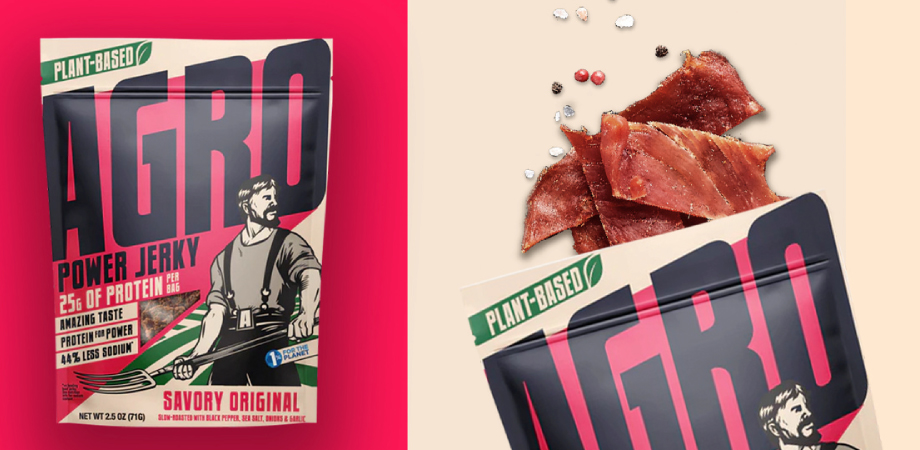
Agro pioneered a solution: Power Jerky: high protein snacks with lower salt levels.
Thanks to the Sprint Mode™ tool, developed by CBA’s USA-based teams, our teams and AGRO’s worked together to develop a striking graphic system and a solid marketing strategy in just 6 weeks! The graphic system resonates with the product’s ethos and founders, aiming to tackle concerns about the environmental impact of meat production.
Agro pioneered a solution: Power Jerky: high protein snacks with lower salt levels.
Thanks to the Sprint Mode™ tool, developed by CBA’s USA-based teams, our teams and AGRO’s worked together to develop a striking graphic system and a solid marketing strategy in just 6 weeks! The graphic system resonates with the product’s ethos and founders, aiming to tackle concerns about the environmental impact of meat production.

Product innovation is constantly growing and evolving. By proposing a new way of consuming, brands seek to stand out from the crowd and carve out a solid place for themselves in the food market, while responding to today’s challenges such as the climate emergency and animal welfare.
Product innovation is constantly growing and evolving. By proposing a new way of consuming, brands seek to stand out from the crowd and carve out a solid place for themselves in the food market, while responding to today’s challenges such as the climate emergency and animal welfare.
Credit: Jiminis
Jiminis offers protein-rich insect-based foods. These include bars, granolas, and crackers. This new form of insect-based food provides many essential nutrients, while diversifying taste experiences thanks to new food textures and shapes.
Unlike Danone with its Hi Pro brand, Jiminis opts for a different approach, displaying the words “Rich in protein” on the front of its packaging and detailing the nutritional percentages on the back. Jiminis relies on colorful, peppy packaging to attract the eye and curiosity of consumers and encourage them to find out more about the product and the brand.
Unlike Danone with its Hi Pro brand, Jiminis opts for a different approach, displaying the words “Rich in protein” on the front of its packaging and detailing the nutritional percentages on the back. Jiminis relies on colorful, peppy packaging to attract the eye and curiosity of consumers and encourage them to find out more about the product and the brand.
Unlike Danone with its Hi Pro brand, Jiminis opts for a different approach, displaying the words “Rich in protein” on the front of its packaging and detailing the nutritional percentages on the back. Jiminis relies on colorful, peppy packaging to attract the eye and curiosity of consumers and encourage them to find out more about the product and the brand.
Always striving to differentiate themselves from the competition, brands specializing in nutrition are seeking to win over customers by offering packaging that encourages interaction. As we already mentioned in our article on connected packaging, which you can read here, the packaging is a crucial point of brand activation, bridging the gap between the real and digital worlds and offering a differentiating and memorable experience.
Hux, which specializes in health and wellness supplements that cater to various nutritional needs such as hydration, sleep, and protein, has decided to introduce QR codes on its packaging, offering a more precise and exhaustive description of its products.
Credit: Hux
Always striving to differentiate themselves from the competition, brands specializing in nutrition are seeking to win over customers by offering packaging that encourages interaction. As we already mentioned in our article on connected packaging, which you can read here, the packaging is a crucial point of brand activation, bridging the gap between the real and digital worlds and offering a differentiating and memorable experience.
Hux, which specializes in health and wellness supplements that cater to various nutritional needs such as hydration, sleep, and protein, has decided to introduce QR codes on its packaging, offering a more precise and exhaustive description of its products.
Credit: Hux
Always striving to differentiate themselves from the competition, brands specializing in nutrition are seeking to win over customers by offering packaging that encourages interaction. As we already mentioned in our article on connected packaging, which you can read here, the packaging is a crucial point of brand activation, bridging the gap between the real and digital worlds and offering a differentiating and memorable experience.
Connected packaging offers transparency and reassures consumers about their consumption choices. Additionally, it serves as a powerful tool for gathering data and consumer information, enabling brands to adjust their strategy in real time to reach their target audience.
Connected packaging offers transparency and reassures consumers about their consumption choices. Additionally, it serves as a powerful tool for gathering data and consumer information, enabling brands to adjust their strategy in real time to reach their target audience.
Connected packaging offers transparency and reassures consumers about their consumption choices. Additionally, it serves as a powerful tool for gathering data and consumer information, enabling brands to adjust their strategy in real time to reach their target audience.
As you can imagine, consumer habits are constantly evolving. It’s crucial to meet consumers’ dietary objectives while respecting their values, from the environment to animal welfare. Packaging is the key to clearly conveying nutritional attributes and illustrating your transparency to your consumers.
As you can imagine, consumer habits are constantly evolving. It’s crucial to meet consumers’ dietary objectives while respecting their values, from the environment to animal welfare. Packaging is the key to clearly conveying nutritional attributes and illustrating your transparency to your consumers.
To discover more trends, download right now our 2024 Useful Design Trends report.
To discover more trends, download right now our 2024 Useful Design Trends report.
Luxury brands face several design challenges that require them to balance their commitment to craftsmanship, aesthetics, and innovation with changing consumer preferences and market trends. One of the most significant challenges is maintaining exclusivity and uniqueness while reaching broader audiences. To address this obstacle, luxury brands must find ways to create products that are exclusive and accessible, such as developing limited edition products or offering personalized customization options.
Another challenge is staying at the forefront of design and innovation while maintaining the brand heritage. Luxury brands must be mindful of the fact that their products often carry a rich history and cultural significance, which must be reflected in the design process. At the same time, they must also embrace emerging technologies and design practices to stay relevant and competitive.
Luxury brands face several design challenges that require them to balance their commitment to craftsmanship, aesthetics, and innovation with changing consumer preferences and market trends. One of the most significant challenges is maintaining exclusivity and uniqueness while reaching broader audiences. To address this obstacle, luxury brands must find ways to create products that are both exclusive and accessible, such as developing limited edition products or offering personalized customization options.
Another challenge is staying at the forefront of design and innovation while maintaining the brand heritage. Luxury brands must be mindful of the fact that their products often carry a rich history and cultural significance, which must be reflected in the design process. At the same time, they must also embrace emerging technologies and design practices to stay relevant and competitive.
In a long-term partnership with the luxury group LVMH and video game/software developer Epic Games, Fendi, part of the LVMH group, creates a unique customer experience by introducing 3D technology into its boutiques for bespoke creations. Leveraging Epic Games‘ Unreal Engine 5 3D design solution, select boutiques will offer their clientele hyper-realistic previews of customized products on screens. This new service aims at ultra-personalization, optimizing consumer engagement and satisfaction by involving them directly in the creation process. This experience not only enhances customer relationships but also provides a privileged and memorable experience.
Credits: Fendi
In a long-term partnership with the luxury group LVMH and video game/software developer Epic Games, Fendi, part of the LVMH group, creates a unique customer experience by introducing 3D technology into its boutiques for bespoke creations. Leveraging Epic Games‘ Unreal Engine 5 3D design solution, select boutiques will offer their clientele hyper-realistic previews of customized products on screens. This new service aims at ultra-personalization, optimizing consumer engagement and satisfaction by involving them directly in the creation process. This experience not only enhances customer relationships but also provides a privileged and memorable experience.
Credits: Fendi
Credits: Fendi
In a long-term partnership with the luxury group LVMH and video game/software developer Epic Games, Fendi, part of the LVMH group, is creating a unique customer experience by introducing 3D technology into its boutiques for bespoke creations. Leveraging Epic Games‘ Unreal Engine 5 3D design solution, select boutiques will offer their clientele hyper-realistic previews of customized products on screens. This new service aims at ultra-personalization, optimizing consumer engagement and satisfaction by involving them directly in the creation process. This experience not only enhances customer relationships but also provides a privileged and memorable experience.
Credits: Fendi
Augmented Reality (AR), with a market value expected to reach $88.4 billion by 2026, is a technology that allows designers to innovate by creating 3D models. This technology has the potential to revolutionize the shopping experience by offering personalized and engaging interactions, such as virtual product try-ons before making a purchase.
When fully utilized, retailers can harness AR to achieve business objectives. According to a Deloitte report, 71% of shoppers would likely shop more frequently when using AR-powered apps. Moreover, 40% of consumers are willing to pay more if they’re able to test a product in AR.
Augmented Reality (AR), with a market value expected to reach $88.4 billion by 2026, is a technology that allows designers to innovate by creating 3D models. This technology has the potential to revolutionize the shopping experience by offering personalized and engaging interactions, such as virtual product try-ons before making a purchase.
When fully utilized, retailers can harness AR to achieve business objectives. According to a Deloitte report, 71% of shoppers would likely shop more frequently when using AR-powered apps. Moreover, 40% of consumers are willing to pay more if they’re able to test a product in AR.
Credits: SnapInc
Cartier‘s collaboration with Snapchat exemplifies how a luxury brand can benefit from augmented reality technology to elevate customer engagement. Through this partnership, Cartier enabled the public to virtually try on their Trinity rings. The lens uses machine learning to accurately predict the 3D shape of each user’s hand, ensuring a personalized experience. Previously, the French luxury house had collaborated with Snapchat to create a similar experience around the Tank Française watch. These initiatives not only enhance the customer experience but also reinforce Cartier’s brand identity as a pioneer in luxury and innovation.
Credits: SnapInc
Cartier‘s collaboration with Snapchat exemplifies how a luxury brand can benefit from augmented reality technology to elevate customer engagement. Through this partnership, Cartier enabled the public to virtually try on their Trinity rings. The lens uses machine learning to accurately predict the 3D shape of each user’s hand, ensuring a personalized experience. Previously, the French luxury house had collaborated with Snapchat to create a similar experience around the Tank Française watch.
These initiatives not only enhance the customer experience but also reinforce Cartier’s brand identity as a pioneer in luxury and innovation.
Cartier’s collaboration with Snapchat exemplifies how a luxury brand can benefit from augmented reality technology to elevate customer engagement. Through this partnership, Cartier enabled the public to virtually try on their Trinity rings. The lens uses machine learning to accurately predict the 3D shape of each user’s hand, ensuring a personalized experience. Previously, the French luxury house had collaborated with Snapchat to create a similar experience around the Tank Française watch. These initiatives not only enhance the customer experience but also reinforce Cartier’s brand identity as a pioneer in luxury and innovation.
Credits: SnapInc
The metaverse, a rapidly growing virtual world, offers an immersive experience where individuals interact with people, products, and places through avatars. This digital realm includes virtual marketplaces where users can buy and sell goods, services, and experiences, providing brands with a unique platform to express their identities and craft differentiated experiences. Analysts project that the market for virtual luxury goods could soar to USD 50 billion by 2030, highlighting the vast potential of this virtual world.
For brands, the metaverse represents a new frontier to cultivate long-term customer relationships rather than focusing on short-term gains. Luxury brands can leverage this virtual world to offer experiences that transcend physical limitations, enhancing consumer loyalty and driving new revenue streams.
The metaverse, a rapidly growing virtual world, offers an immersive experience where individuals interact with people, products, and places through avatars. This digital realm includes virtual marketplaces where users can buy and sell goods, services, and experiences, providing brands with a unique platform to express their identities and craft differentiated experiences. Analysts project that the market for virtual luxury goods could soar to USD 50 billion by 2030, highlighting the vast potential of this virtual world.
For brands, the metaverse represents a new frontier to cultivate long-term customer relationships rather than focusing on short-term gains. Luxury brands can leverage this virtual world to offer experiences that transcend physical limitations, enhancing consumer loyalty and driving new revenue streams.
The use of this tool by prestigious shopping centers like Printemps and iconic luxury brands such as Tiffany & Co., Gucci and Givenchy, illustrates its potential. For instance, Givenchy has embraced the metaverse by partnering with Roblox to create an interactive virtual world. This space features a dance floor, ice rink, and virtual makeup area where visitors can engage in challenges and win branded products. These brands utilize the metaverse to enhance customer experiences and engage their audiences in innovative ways, adapting to new buying patterns and showcasing vast opportunities for growth and connection in this dynamic digital landscape.
Credits: Givenchy Beauty IG Account
The use of this tool by prestigious shopping centers like Printemps and iconic luxury brands such as Tiffany & Co., Gucci and Givenchy, illustrates its potential. For instance, Givenchy has embraced the metaverse by partnering with Roblox to create an interactive virtual world. This space features a dance floor, ice rink, and virtual makeup area where visitors can engage in challenges and win branded products.
These brands utilize the metaverse to enhance customer experiences and engage their audiences in innovative ways, adapting to new buying patterns and showcasing vast opportunities for growth and connection in this dynamic digital landscape.
Credits: Givenchy Beauty IG Account
The use of this tool by prestigious shopping centers like Printemps and iconic luxury brands such as Tiffany & Co., Gucci and Givenchy, illustrates its potential. For instance, Givenchy has embraced the metaverse by partnering with Roblox to create an interactive virtual world. This space features a dance floor, ice rink, and virtual makeup area where visitors can engage in challenges and win branded products.
Credits: Givenchy Beauty IG Account
These brands utilize the metaverse to enhance customer experiences and engage their audiences in innovative ways, adapting to new buying patterns and showcasing the vast opportunities for growth and connection in this dynamic digital landscape.
The metaverse is neither the only nor the most popular tool for adopting the codes of the digital landscape. Gaming has become more than just a trend; it is now an integral part of consumer habits.
Today, gaming is the leading cultural industry. It is as much a part of our cultural references and heritage as music, comics, cinema, and so on.
– Marie Bories, Director of Research and Marketing, Webedia Group
The central place of gaming in daily life makes it essential for luxury brands to quickly integrate their codes to reach a young audience, which is expected to make 25 to 30% of luxury purchases by 2030.
A study conducted by Dynata for Webedia among a sample of 1,005 respondents aged 18 and over found that 66% of 18-34-year-olds believe that integrating the gaming universe is a good idea for brands outside this universe. They see it as beneficial for making a product known (40%), recruiting new clients and/or rejuvenating a consumer base (35%), increasing sales (28%), and enhancing a product’s attractiveness (24%).
The expanding role of the gaming universe as a powerful medium is exemplified by the initiatives of numerous luxury brands such as Cartier, Burberry, Louis Vuitton, Hermès, Gucci, Dolce & Gabbana, and many more. For instance, Cartier introduced “The Fabulous Cartier Journey,” an interactive video game as part of its “The Fabulous Cartier House” end-of-year campaign, aimed at enhancing storytelling and engagement with its audience. On the other hand, Dolce & Gabbana collaborated with video game specialist Razer to create a collection of clothing and equipment dedicated to gaming, while Tiffany partnered with Pokémon to launch an exclusive collection of necklaces. These examples showcase the various ways in which luxury brands are tapping into the gaming universe to connect with younger audiences and adapt to current consumer habits.
The metaverse is neither the only nor the most popular tool for adopting the codes of the digital landscape. Gaming has become more than just a trend; it is now an integral part of consumer habits.
Today, gaming is the leading cultural industry. It is as much a part of our cultural references and heritage as music, comics, cinema, and so on
– Marie Bories, Director of Research and Marketing, Webedia Group
The central place of gaming in daily life makes it essential for luxury brands to quickly integrate their codes to reach a young audience, which is expected to make 25 to 30% of luxury purchases by 2030.
A study conducted by Dynata for Webedia among a sample of 1,005 respondents aged 18 and over found that 66% of 18-34 -year-olds believe that integrating the gaming universe is a good idea for brands outside this universe. They see it as beneficial for making a product known (40%), recruiting new clients and/or rejuvenating a consumer base (35%), increasing sales (28%), and enhancing a product’s attractiveness (24%).
The expanding role of the gaming universe as a powerful medium is exemplified by the initiatives of numerous luxury brands such as Cartier, Burberry, Louis Vuitton, Hermès, Gucci, Dolce & Gabbana, and many more. For instance, Cartier introduced “The Fabulous Cartier Journey“, an interactive video game as part of its “The Fabulous Cartier House” end-of-year campaign, aimed at enhancing storytelling and engagement with its audience. On the other hand, Dolce & Gabbana collaborated with video game specialist Razer to create a collection of clothing and equipment dedicated to gaming, while Tiffany partnered with Pokémon to launch an exclusive collection of necklaces. These examples showcase the various ways in which luxury brands are tapping into the gaming universe to connect with younger audiences and adapt to current consumer habits.
Credits: Razer
Credits: The Fabulous Cartier Journey
Credits: Razer and The Fabulous Cartier Journey
The new opportunities of design present new avenues for luxury brands to innovate and differentiate themselves in the market while maintaining their commitment to exclusivity, craftsmanship, and tradition. By leveraging these new technologies and practices, luxury brands can create personalized and immersive experiences that resonate with consumers and establish strong brand identities that stand the test of time.
The new opportunities of design present new avenues for luxury brands to innovate and differentiate themselves in the market while maintaining their commitment to exclusivity, craftsmanship, and tradition. By leveraging these new technologies and practices, luxury brands can create personalized and immersive experiences that resonate with consumers and establish strong brand identities that stand the test of time.
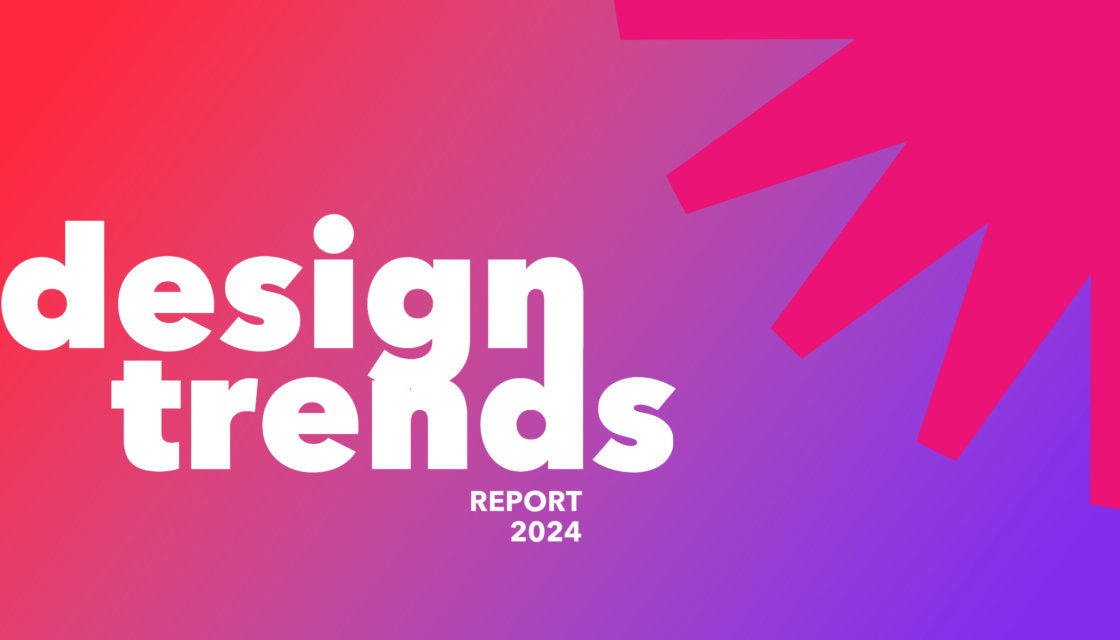
To discover more trends, download right now our 2024 Useful Design Trends report.

To discover more trends, download right now our 2024 Useful Design Trends report.
Gyms are reinventing themselves and seeking to innovate with new concepts. As you may have noticed, a new lexicon has appeared over the last few years: pilates, reformer, indoor cycling, infrared-heated workouts …
These workout spaces present a new, innovative approach to exercise, where fun and self-improvement are at the heart of their concept. Immersion is the new keyword, and the spaces are designed to immerse athletes in a stimulating scenography and motivating group atmosphere. With music and dynamic lighting, these new spaces are extremely popular!
Gyms are reinventing themselves and seeking to innovate with new concepts. As you may have noticed, a new lexicon has appeared over the last few years: pilates, reformer, indoor cycling, infrared-heated workouts …
These workout spaces present a new, innovative approach to exercise, where fun and self-improvement are at the heart of their concept. Immersion is the new keyword, and the spaces are designed to immerse athletes in a stimulating scenography and motivating group atmosphere. With music and dynamic lighting, these new spaces are extremely popular!
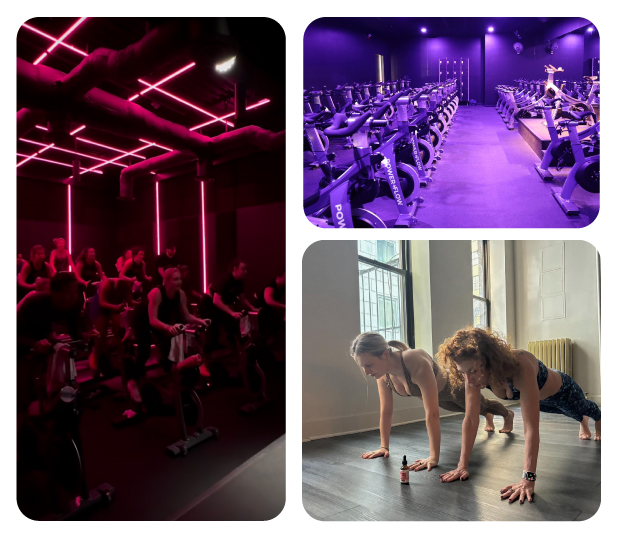
Credits: One Yoga NY and Power+Flow studio.
Even crazier concepts are now on the market. How about classes under 95 degrees Fahrenheit with 40% humidity? One Yoga NY, a gym located in the heart of lower Manhattan’s, offers group workouts focusing on controlled breathing and a balanced muscle workout regimen, enhancing both strength and flexibility.
Power+Flow studio provide a unique workout experience by offering an indoor cycling experience with upbeat music and a vibrant and energetic atmosphere, motivating its client to push beyond their limits.
The uniqueness of the concept attracts people who are seeking a different way to experience fitness.
Even crazier concepts are now on the market. How about classes under 95 degrees Fahrenheit with 40% humidity? One Yoga NY, a gym located in the heart of lower Manhattan’s, offers group workouts focusing on controlled breathing and a balanced muscle workout regimen, enhancing both strength and flexibility.
Credits: One Yoga NY and Power+Flow studio.
Power+Flow studio provide a unique workout experience by offering an indoor cycling experience with upbeat music and a vibrant and energetic atmosphere, motivating its client to push beyond their limits.
The uniqueness of the concept attracts people who are seeking a different way to experience fitness.
Beyond the curiosity and attraction surrounding these new concepts, these « group workouts » are experiencing significant growth as consumers once again need physical interaction, after a long period of lockdowns. Social medias are having a strong impact, highlighting this notion of well-being, which involves sport, food and even cosmetics.
Beyond the curiosity and attraction surrounding these new concepts, these « group workouts » are experiencing significant growth as consumers once again need physical interaction, after a long period of lockdowns. Social medias are having a strong impact, highlighting this notion of well-being, which involves sport, food and even cosmetics.
Your prospects and customers are seeking to live an experience! Sport must be seen as a fun and attractive activity. Spaces are therefore being completely redesigned, focusing on experience and immersion. The environment you offer them, and the layout of your spaces are therefore of crucial importance.
Your prospects and customers are seeking to live an experience! Sport must be seen as a fun and attractive activity. Spaces are therefore being completely redesigned, focusing on experience and immersion. The environment you offer them, and the layout of your spaces are therefore of crucial importance.
The last Stylus report Combat Sports, Leisure’s New Obsession highlights the growing popularity of martial arts adoption. Many gyms specialize in these combat sports. A trend confirmed notably by the number of searches on Pinterest:
+ 200% « Mixed Martial Arts Training »,
+ 265% « Kick-boxing aesthetics»,
+ 30% « Qui-jitsu ».
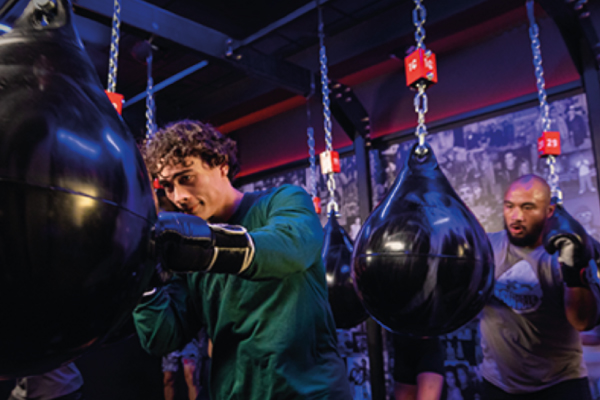
Credit: Rumble Boxing
The last Stylus report Combat Sports, Leisure’s New Obsession highlights the growing popularity of martial arts adoption. Many gyms specialize in these combat sports. A trend confirmed notably by the number of searches on Pinterest:
+ 200% « Mixed Martial Arts Training »,
+ 265% « Kick-boxing aesthetics»,
+ 30% « Qui-jitsu ».
Credit: Rumble Boxing
This growing adoption highlights the desire of certain communities to learn combat techniques to better arm themselves in public and private. Among the first to be affected are women and the LGBTQ+ community.
Martial arts are highly prized today and are put in the spotlight. YouTubers, streamers, and media figures have also shed light on certain practices, such as boxing, by organizing tournaments, accumulating millions of views on social media.
This growing adoption highlights the desire of certain communities to learn combat techniques to better arm themselves in public and private. Among the first to be affected are women and the LGBTQ+ community.
Martial arts are highly prized today and are put in the spotlight. YouTubers, streamers, and media figures have also shed light on certain practices, such as boxing, by organizing tournaments, accumulating millions of views on social media.
Martial arts bring together a strong, committed community. It is an interesting niche market that is growing all the time and brings together a vast number of passionate people. Teaching martial arts to your customers gives them the weapons to defend themselves, and thus strengthens your relationship with them. It’s also a significant commitment on your part to their safety and well-being.
This trend also offers the opportunity to design sport clothing and equipment specifically adapted to these practices. For many people, sportswear is more than just functional clothing. It becomes an important source of motivation. It acquires a fashion dimension .
Martial arts bring together a strong, committed community. It is an interesting niche market that is growing all the time and brings together a vast number of passionate people. Teaching martial arts to your customers gives them the weapons to defend themselves, and thus strengthens your relationship with them. It’s also a significant commitment on your part to their safety and well-being.
Numerous fitness applications based on AI have appeared on the market. AI opens up an unlimited field of possibilities, for both individuals and professionals.
Numerous fitness applications based on AI have appeared on the market. AI opens up an unlimited field of possibilities, for both individuals and professionals.
It enables you to personalize your workout in real time, based on precise data (age, body mass, fitness level, hydration level, sporting objectives etc.). Recommendations are made in terms of exercise, level of difficulty, number of repetition or even duration of training.
It enables you to personalize your workout in real time, based on precise data (age, body mass, fitness level, hydration level, sporting objectives etc.). Recommendations are made in terms of exercise, level of difficulty, number of repetition or even duration of training.
Gymfitty, for example, offers intelligent and ultra-personalized workouts based on complex algorithms. Users interact with a chat bot that personalized their workout in real time, based on their goals, heart rate and anatomy, feedback during the workout …
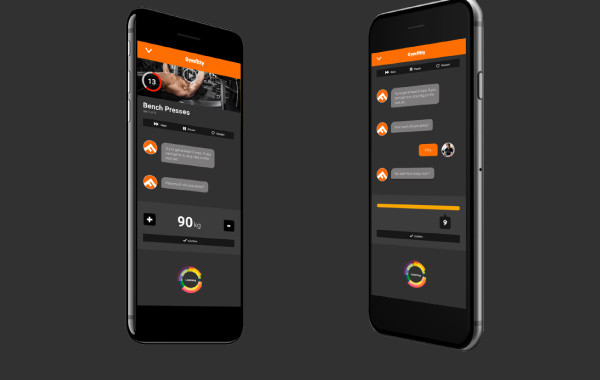
Credit: Gymfitty.com
Gymfitty, for example, offers intelligent and ultra-personalized workouts based on complex algorithms. Users interact with a chat bot that personalized their workout in real time, based on their goals, heart rate and anatomy, feedback during the workout …

Credits: Gymfitty.com
IA offers innovative possibilities, enabling the creation of differentiated sports experience based on tangible data, factors that reassure consumers. However, be careful not to lose the human and emotional aspect, which we know can be a very important subject for the new generations.
IA offers innovative possibilities, enabling the creation of differentiated sports experience based on tangible data, factors that reassure consumers. However, be careful not to lose the human and emotional aspect, which we know can be a particularly important subject for the new generations.
To discover more trends, download right now our 2024 Useful Design Trends report.
Foodtech has revolutionized the culinary industry, transforming not only our eating, cooking habits but also our mindset. The constantly evolving sector offers numerous opportunities for brands looking to stand out in the market. According to Emergen Research, it is estimated that the global Foodtech market could climb up to $342 billion by 2027. However, it’s important to understand that Foodtech is not just about food, but also about the overall consumer experience. And this is where design comes into play.
Foodtech has come a long way since its inception. From simple innovations like canned goods and refrigeration to more complex ones like molecular gastronomy and plant-based meat substitutes. Food technology has continually pushed the boundaries of what’s possible in the culinary world. Today, it involves creating sustainable, healthy, and convenient food options that cater to the needs of modern consumers.

Credit : Rebellyous Foods
This topic is gaining importance, now touching a wide range of players including schools, thanks to the expansion of foodtech. Rebellyous Foods, a company specializing in plant-based nuggets, is expanding its influence, with more and more educational establishments opting for its products. According to this Seattle-based company, this trend reflects a growing movement within US schools, aiming to offer a greater variety of plant-based options.
Design plays a crucial role in this evolution. By integrating a design approach into the development of new food products and services, Foodtech companies can create solutions that are not only functional but also aesthetically pleasing. For instance, the packaging design can make or break a product’s success in the market. By using environmentally friendly materials and attractive designs, brands can attract environmentally conscious consumers while standing out on the shelves.
Credits: eat meati ig.
Take the exemple of Eat Meati, a brand specializing in providing mushroom-based alternatives to meat. Their aim is to shift perception about vegan dishes, and to achieve this, they have developed fun and colorful packaging that is both attractive et positive.
Take the exemple of Eat Meati, a brand specializing in providing mushroom-based alternatives to meat. Their aim is to shift perception about vegan dishes, and to achieve this, they have developed fun and colorful packaging that is both attractive et positive.
Credits: eat meati ig.
By placing consumer needs and preferences at the forefront of product development, Foodtech companies can create solutions that truly resonate with their target audience. This approach involves conducting in-depth research and gathering consumer testimonials until the final product genuinely meets customer needs.
Meal kit delivery services are an excellent example of consumer-centered design. These services eliminate the daily hassles of meal planning and grocery shopping by delivering proportioned ingredients and recipes right to our doorstep. Catering to busy professionals and families who want to eat healthy meals at home without spending hours in the kitchen, meal kit delivery services have become a popular choice for many consumers.
Moreover, Foodtech doesn’t just meet our food needs; it also tackles broader issues like food waste.
Flashfood is a US app that enables users to purchase unsold food at reduced prices. By partnering with grocery chains, the company facilitates the sale of surplus food via its app, providing users with substantial savings while addressing food waste at the store level.
Credit : Flashfood
Moreover, Foodtech doesn’t just meet our food needs; it also tackles broader issues like food waste.
Flashfood is a US app that enables users to purchase unsold food at reduced prices. By partnering with grocery chains, the company facilitates the sale of surplus food via its app, providing users with substantial savings while addressing food waste at the store level.
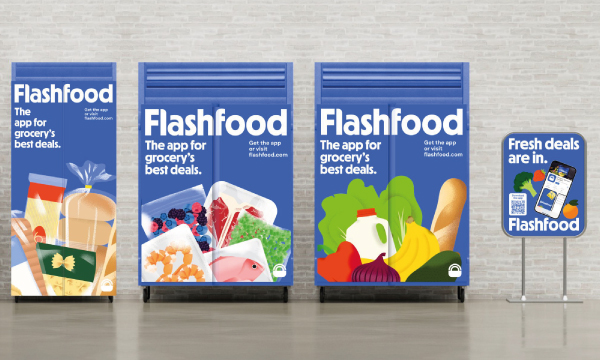
Credit : Flashfood
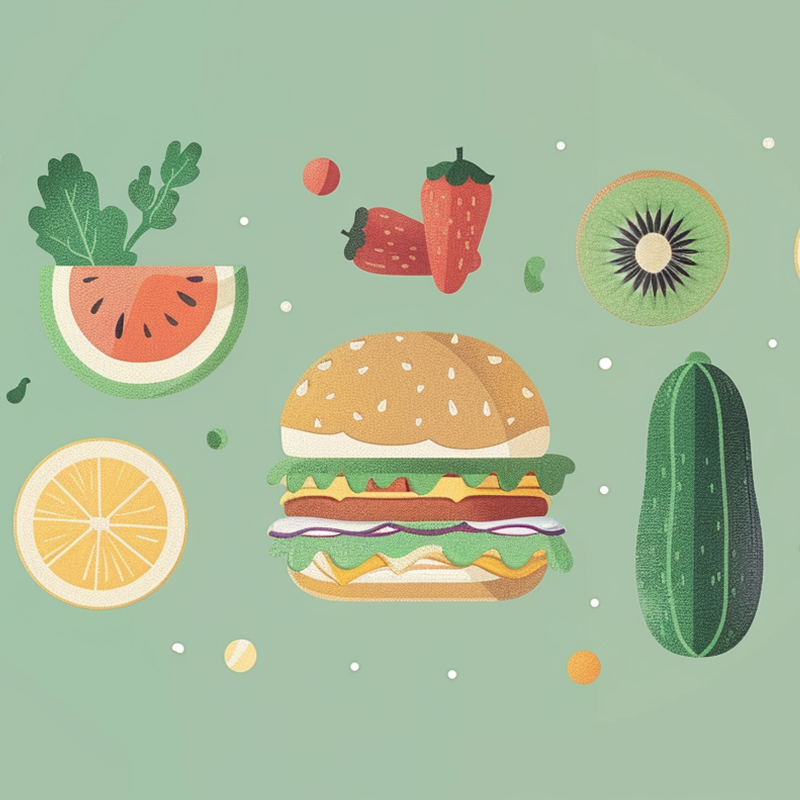
Credit : Midjourney
The future of Foodtech is promising, with endless possibilities for innovation and growth. One particularly interesting area is the use of technology to enhance the culinary experience. From augmented reality menus to smart kitchen appliances, technology is changing the way we interact with food. Moreover, as consumers become increasingly aware of the environmental impact of their diet, food technology companies are exploring new ways to reduce waste and promote sustainable practices. This ranges from using biodegradable packaging to developing plant-based alternatives to traditional meat products.

Credit : Midjourney
The future of Foodtech is promising, with endless possibilities for innovation and growth. One particularly interesting area is the use of technology to enhance the culinary experience. From augmented reality menus to smart kitchen appliances, technology is changing the way we interact with food. Moreover, as consumers become increasingly aware of the environmental impact of their diet, food technology companies are exploring new ways to reduce waste and promote sustainable practices. This ranges from using biodegradable packaging to developing plant-based alternatives to traditional meat products.
The horizon for Foodtech seems bright. This growth would primarily be driven by a steadily increasing demand for healthier, more sustainable, and convenient food products. However, Foodtech still has several hurdles to overcome, particularly regarding regulations and financing. It’s also crucial to ensure that these technological innovations do not create new disparities, such as favoring a wealthier clientele.
Foodtech has revolutionized the culinary industry, transforming not only our eating, cooking habits but also our mindset. The constantly evolving sector offers numerous opportunities for brands looking to stand out in the market. According to Emergen Research, it is estimated that the global Foodtech market could climb up to $342 billion by 2027. However, it’s important to understand that Foodtech is not just about food, but also about the overall consumer experience. And this is where design comes into play.
Foodtech has come a long way since its inception. From simple innovations like canned goods and refrigeration to more complex ones like molecular gastronomy and plant-based meat substitutes. Food technology has continually pushed the boundaries of what’s possible in the culinary world. Today, it involves creating sustainable, healthy, and convenient food options that cater to the needs of modern consumers.
This topic is gaining importance, now touching a wide range of players including schools, thanks to the expansion of foodtech. Rebellyous Foods, a company specializing in plant-based nuggets, is expanding its influence, with more and more educational establishments opting for its products. According to this Seattle-based company, this trend reflects a growing movement within US schools, aiming to offer a greater variety of plant-based options.

Credit : Rebellyous Foods
Design plays a crucial role in this evolution. By integrating a design approach into the development of new food products and services, Foodtech companies can create solutions that are not only functional but also aesthetically pleasing. For instance, the packaging design can make or break a product’s success in the market. By using environmentally friendly materials and attractive designs, brands can attract environmentally conscious consumers while standing out on the shelves.
Take the exemple of Eat Meati, a brand specializing in providing mushroom-based alternatives to meat. Their aim is to shift perception about vegan dishes, and to achieve this, they have developed fun and colorful packaging that is both attractive et positive.

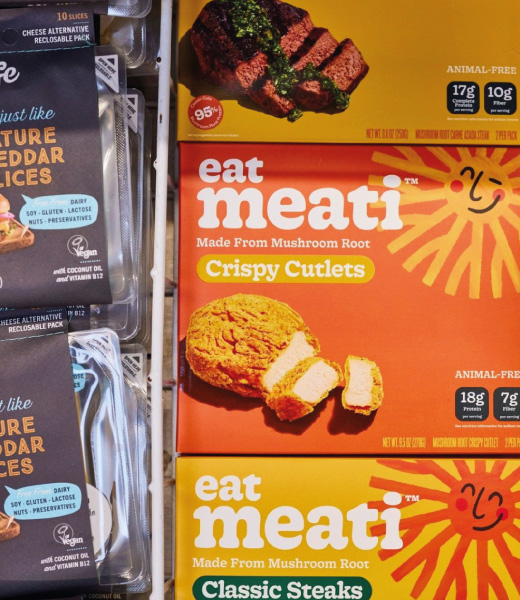
Credits: meatifood ig
By placing consumer needs and preferences at the forefront of product development, Foodtech companies can create solutions that truly resonate with their target audience. This approach involves conducting in-depth research and gathering consumer testimonials until the final product genuinely meets customer needs.
Meal kit delivery services are an excellent example of consumer-centered design. These services eliminate the daily hassles of meal planning and grocery shopping by delivering proportioned ingredients and recipes right to our doorstep. Catering to busy professionals and families who want to eat healthy meals at home without spending hours in the kitchen, meal kit delivery services have become a popular choice for many consumers.
Moreover, Foodtech doesn’t just meet our food needs; it also tackles broader issues like food waste.
Flashfood is a US app that enables users to purchase unsold food at reduced prices. By partnering with grocery chains, the company facilitates the sale of surplus food via its app, providing users with substantial savings while addressing food waste at the store level.
Credit : Flashfood
The future of Foodtech is promising, with endless possibilities for innovation and growth. One particularly interesting area is the use of technology to enhance the culinary experience. From augmented reality menus to smart kitchen appliances, technology is changing the way we interact with food. Moreover, as consumers become increasingly aware of the environmental impact of their diet, food technology companies are exploring new ways to reduce waste and promote sustainable practices. This ranges from using biodegradable packaging to developing plant-based alternatives to traditional meat products.
The horizon for Foodtech seems bright. This growth would primarily be driven by a steadily increasing demand for healthier, more sustainable, and convenient food products. However, Foodtech still has several hurdles to overcome, particularly regarding regulations and financing. It’s also crucial to ensure that these technological innovations do not create new disparities, such as favoring a wealthier clientele.
Holiday seasons like Valentine’s Day stand as pivotal moments for brands to cultivate consumer engagement and drive sales, leveraging the emotional resonance inherent on such occasions. Once a simple celebration of affection, February 14th has evolved into a grand marketing spectacle, wielding immense economic influence across diverse industries.
In fact, in 2024, Valentine’s Day expenditures in the United States are projected to soar to a staggering $26 billion (Statista, 2024). These figures underscore the burgeoning opportunity that this day represents for brands.
Therefore, it is legitimate to ask, how brands can leverage design strategies to maximize consumer engagement and drive sales during Valentine’s Day, as an opportunity to forge deeper connection with their audience.
In today’s dynamic landscape of relationships, the concept of “situationships” has emerged as a prominent phenomenon, especially among younger generations. According to a 2022 survey conducted by YPulse, 20% of Gen Z and 16% of Millennials report they have been in a situationship. And 35% of Gen z say they prefer to have an undefined relationship rather than one with a label, highlighting the evolving nature of modern love dynamics.
The campaign quickly gained traction on social media platforms, garnering over 1.2 million views on TikTok and sparking engagement from users who resonated with how confusing situationships can be. The brand’s website further extends the campaign’s reach with downloadable e-cards bearing phrases like “Do you know how much you mean to me? Because I don’t.” adding a touch of humor and authenticity to their Valentine’s Day strategy. This approach exemplifies how brands can adapt to evolving consumer behaviors and cultural trends, infusing their offerings with relevance and resonance.
Today’s romantic landscape is inseparable from dating apps. With 2.3 million daily unique visitors to these platforms in France in 2023, dating apps have become an essential aspect of modern romance. Consequently, they represent a significant business opportunity for brands aiming to expand their audience reach, enhance visibility, and engage users in meaningful ways by addressing real-life challenges.
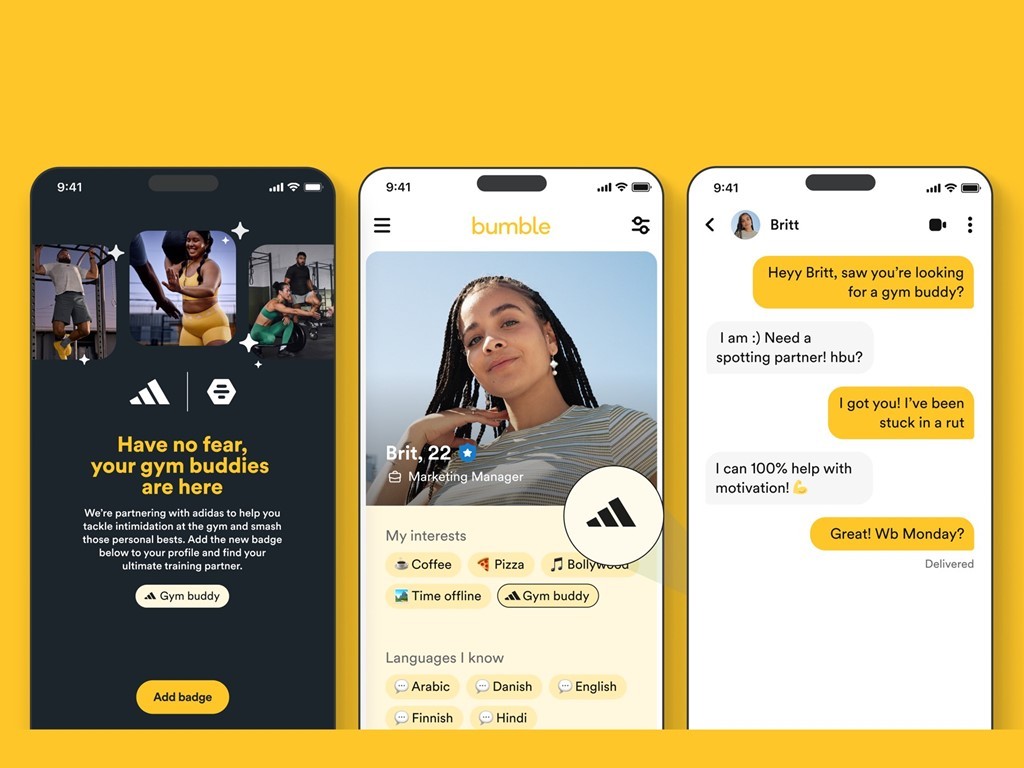
For example, Adidas and Bumble have collaborated to introduce a Gym Buddy Interest Badge on the dating app. This badge simplifies the process of finding potential gym partners who share a passion for staying active. The collaboration is in line with the launch of Adidas’s Spring/Summer 2024 Strength collection, showcasing the boundless potential of brand partnerships.
In another partnership, Tinder and Merci Handy have unveiled a capsule beauty collection named “First Date Heroes“. Inspired by an IFOP study for Tinder, which revealed that 74% of 18-25 year olds in France feel stressed before a date, this kit aims to ease the anxiety of first encounters. Additionally, 10% of proceeds from the collection are donated to Consentis, an association advocating for a culture of consent and combating sexual violence in social settings. This collaboration leverages Valentine’s Day as an opportunity to raise awareness of relevant issues and offer solutions that resonate with contemporary dating culture.

The increasing impact of AI is transforming how brands operate, presenting a new frontier in personalization and connection for both audiences and marketers. In the United States, 81% of consumers are open to AI providing personalized communications, underscoring the validity of its integration into communication and marketing strategies, especially evident during Valentine’s Day campaigns.
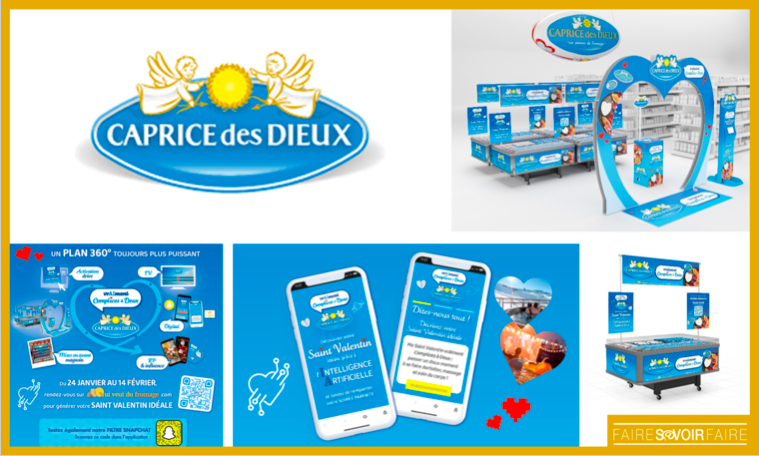
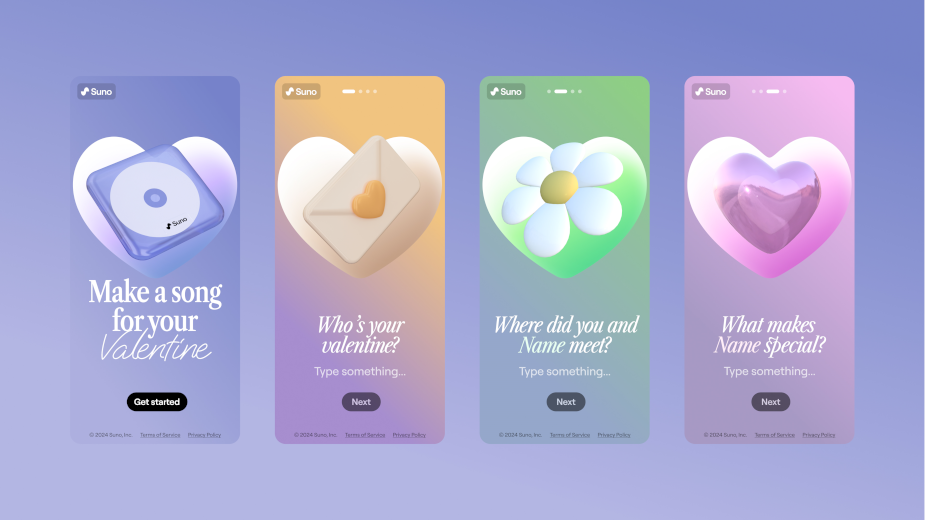
As for holiday season, Valentine’s Day is an opportunity for brands across all sectors to capitalize on the festive spirit by releasing limited edition products and redesigning their packaging. These special releases, ranging from beauty to food items, serve as simple but effective ways to engage consumers and drive sales.
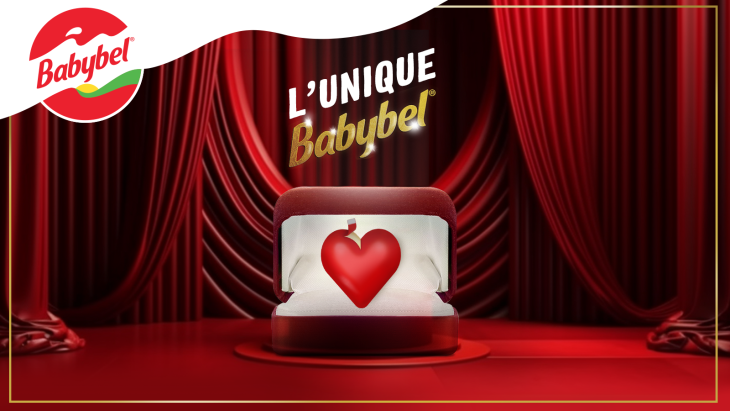
For instance, Babybel celebrates Valentine’s Day with a heart-shaped mini variant of its iconic cheese. However, this special edition isn’t available for purchase in stores; instead, consumers must participate in a sweepstake on Babybel’s Instagram page to win it. This approach not only generates excitement but also amplifies the visibility of the limited edition.
Barilla celebrates Valentine’s Day by introducing heart-shaped pasta, accompanied by special recipes for a romantic evening. Meanwhile, Manly Man Co.‘s Meathearts puts a savory twist on the sweet candy hearts with playful messages like “MEET ME”.
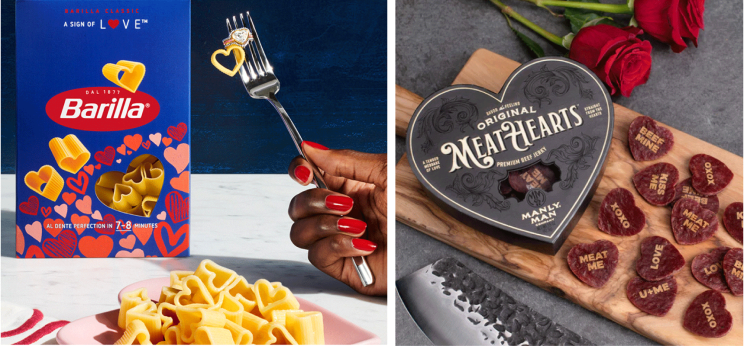

Heinz celebrated the attraction of opposites with Fauchon Paris through the introduction of the Tomacaron: a macaron with ketchup. This limited edition isn’t just a culinary collaboration; it’s a testament to the power of collaboration that unlocked new opportunities to showcase their respective strengths, broaden their audience reach, and unveil a product that captures the imagination of consumers.
Thus, with the constant evolution of trends, technology, and consumer behaviors, brands have a wide range of options to capitalize on Valentine’s Day. They can leverage the latest technological advancements and emerging trends such as “situationships” and artificial intelligence, or opt for more traditional strategies like limited editions. By integrating these approaches in innovative and thoughtful ways, brands can strengthen their position in the market and foster lasting relationships with their audience during Valentine’s Day and beyond.
Holiday seasons like Valentine’s Day stand as pivotal moments for brands to cultivate consumer engagement and drive sales, leveraging the emotional resonance inherent on such occasions. Once a simple celebration of affection, February 14th has evolved into a grand marketing spectacle, wielding immense economic influence across diverse industries.
In fact, in 2024, Valentine’s Day expenditures in the United States are projected to soar to a staggering $26 billion (Statista, 2024). These figures underscore the burgeoning opportunity that this day represents for brands.
Therefore, it is legitimate to ask, how brands can leverage design strategies to maximize consumer engagement and drive sales during Valentine’s Day, as an opportunity to forge deeper connection with their audience.
In today’s dynamic landscape of relationships, the concept of “situationships” has emerged as a prominent phenomenon, especially among younger generations. According to a 2022 survey conducted by YPulse, 20% of Gen Z and 16% of Millennials report they have been in a situationship. And 35% of Gen z say they prefer to have an undefined relationship rather than one with a label, highlighting the evolving nature of modern love dynamics.
The campaign quickly gained traction on social media platforms, garnering over 1.2 million views on TikTok and sparking engagement from users who resonated with how confusing situationships can be. The brand’s website further extends the campaign’s reach with downloadable e-cards bearing phrases like “Do you know how much you mean to me? Because I don’t.” adding a touch of humor and authenticity to their Valentine’s Day strategy. This approach exemplifies how brands can adapt to evolving consumer behaviors and cultural trends, infusing their offerings with relevance and resonance.
Today’s romantic landscape is inseparable from dating apps. With 2.3 million daily unique visitors to these platforms in France in 2023, dating apps have become an essential aspect of modern romance. Consequently, they represent a significant business opportunity for brands aiming to expand their audience reach, enhance visibility, and engage users in meaningful ways by addressing real-life challenges.

For example, Adidas and Bumble have collaborated to introduce a Gym Buddy Interest Badge on the dating app. This badge simplifies the process of finding potential gym partners who share a passion for staying active. The collaboration is in line with the launch of Adidas’s Spring/Summer 2024 Strength collection, showcasing the boundless potential of brand partnerships.
In another partnership, Tinder and Merci Handy have unveiled a capsule beauty collection named “First Date Heroes“. Inspired by an IFOP study for Tinder, which revealed that 74% of 18-25 year olds in France feel stressed before a date, this kit aims to ease the anxiety of first encounters. Additionally, 10% of proceeds from the collection are donated to Consentis, an association advocating for a culture of consent and combating sexual violence in social settings. This collaboration leverages Valentine’s Day as an opportunity to raise awareness of relevant issues and offer solutions that resonate with contemporary dating culture.

The increasing impact of AI is transforming how brands operate, presenting a new frontier in personalization and connection for both audiences and marketers. In the United States, 81% of consumers are open to AI providing personalized communications, underscoring the validity of its integration into communication and marketing strategies, especially evident during Valentine’s Day campaigns.


As for holiday season, Valentine’s Day is an opportunity for brands across all sectors to capitalize on the festive spirit by releasing limited edition products and redesigning their packaging. These special releases, ranging from beauty to food items, serve as simple but effective ways to engage consumers and drive sales.

For instance, Babybel celebrates Valentine’s Day with a heart-shaped mini variant of its iconic cheese. However, this special edition isn’t available for purchase in stores; instead, consumers must participate in a sweepstake on Babybel’s Instagram page to win it. This approach not only generates excitement but also amplifies the visibility of the limited edition.
Barilla celebrates Valentine’s Day by introducing heart-shaped pasta, accompanied by special recipes for a romantic evening. Meanwhile, Manly Man Co.‘s Meathearts puts a savory twist on the sweet candy hearts with playful messages like “MEET ME”.


Heinz celebrated the attraction of opposites with Fauchon Paris through the introduction of the Tomacaron: a macaron with ketchup. This limited edition isn’t just a culinary collaboration; it’s a testament to the power of collaboration that unlocked new opportunities to showcase their respective strengths, broaden their audience reach, and unveil a product that captures the imagination of consumers.
Thus, with the constant evolution of trends, technology, and consumer behaviors, brands have a wide range of options to capitalize on Valentine’s Day. They can leverage the latest technological advancements and emerging trends such as “situationships” and artificial intelligence, or opt for more traditional strategies like limited editions. By integrating these approaches in innovative and thoughtful ways, brands can strengthen their position in the market and foster lasting relationships with their audience during Valentine’s Day and beyond.
Holiday seasons like Valentine’s Day stand as pivotal moments for brands to cultivate consumer engagement and drive sales, leveraging the emotional resonance inherent on such occasions. Once a simple celebration of affection, February 14th has evolved into a grand marketing spectacle, wielding immense economic influence across diverse industries.
In fact, in 2024, Valentine’s Day expenditures in the United States are projected to soar to a staggering $26 billion (Statista, 2024). These figures underscore the burgeoning opportunity that this day represents for brands.
Therefore, it is legitimate to ask, how brands can leverage design strategies to maximize consumer engagement and drive sales during Valentine’s Day, as an opportunity to forge deeper connection with their audience.
In today’s dynamic landscape of relationships, the concept of “situationships” has emerged as a prominent phenomenon, especially among younger generations. According to a 2022 survey conducted by YPulse, 20% of Gen Z and 16% of Millennials report they have been in a situationship. And 35% of Gen z say they prefer to have an undefined relationship rather than one with a label, highlighting the evolving nature of modern love dynamics.
The campaign quickly gained traction on social media platforms, garnering over 1.2 million views on TikTok and sparking engagement from users who resonated with how confusing situationships can be. The brand’s website further extends the campaign’s reach with downloadable e-cards bearing phrases like “Do you know how much you mean to me? Because I don’t.” adding a touch of humor and authenticity to their Valentine’s Day strategy. This approach exemplifies how brands can adapt to evolving consumer behaviors and cultural trends, infusing their offerings with relevance and resonance.
Today’s romantic landscape is inseparable from dating apps. With 2.3 million daily unique visitors to these platforms in France in 2023, dating apps have become an essential aspect of modern romance. Consequently, they represent a significant business opportunity for brands aiming to expand their audience reach, enhance visibility, and engage users in meaningful ways by addressing real-life challenges.
For example, Adidas and Bumble have collaborated to introduce a Gym Buddy Interest Badge on the dating app. This badge simplifies the process of finding potential gym partners who share a passion for staying active. The collaboration is in line with the launch of Adidas’s Spring/Summer 2024 Strength collection, showcasing the boundless potential of brand partnerships.

In another partnership, Tinder and Merci Handy have unveiled a capsule beauty collection named “First Date Heroes“. Inspired by an IFOP study for Tinder, which revealed that 74% of 18-25 year olds in France feel stressed before a date, this kit aims to ease the anxiety of first encounters. Additionally, 10% of proceeds from the collection are donated to Consentis, an association advocating for a culture of consent and combating sexual violence in social settings. This collaboration leverages Valentine’s Day as an opportunity to raise awareness of relevant issues and offer solutions that resonate with contemporary dating culture.

The increasing impact of AI is transforming how brands operate, presenting a new frontier in personalization and connection for both audiences and marketers. In the United States, 81% of consumers are open to AI providing personalized communications, underscoring the validity of its integration into communication and marketing strategies, especially evident during Valentine’s Day campaigns.


As for holiday season, Valentine’s Day is an opportunity for brands across all sectors to capitalize on the festive spirit by releasing limited edition products and redesigning their packaging. These special releases, ranging from beauty to food items, serve as simple but effective ways to engage consumers and drive sales.
For instance, Babybel celebrates Valentine’s Day with a heart-shaped mini variant of its iconic cheese. However, this special edition isn’t available for purchase in stores; instead, consumers must participate in a sweepstake on Babybel’s Instagram page to win it. This approach not only generates excitement but also amplifies the visibility of the limited edition.

Barilla celebrates Valentine’s Day by introducing heart-shaped pasta, accompanied by special recipes for a romantic evening. Meanwhile, Manly Man Co.‘s Meathearts puts a savory twist on the sweet candy hearts with playful messages like “MEET ME”.

Heinz celebrated the attraction of opposites with Fauchon Paris through the introduction of the Tomacaron: a macaron with ketchup. This limited edition isn’t just a culinary collaboration; it’s a testament to the power of collaboration that unlocked new opportunities to showcase their respective strengths, broaden their audience reach, and unveil a product that captures the imagination of consumers.

Thus, with the constant evolution of trends, technology, and consumer behaviors, brands have a wide range of options to capitalize on Valentine’s Day. They can leverage the latest technological advancements and emerging trends such as “situationships” and artificial intelligence, or opt for more traditional strategies like limited editions. By integrating these approaches in innovative and thoughtful ways, brands can strengthen their position in the market and foster lasting relationships with their audience during Valentine’s Day and beyond.
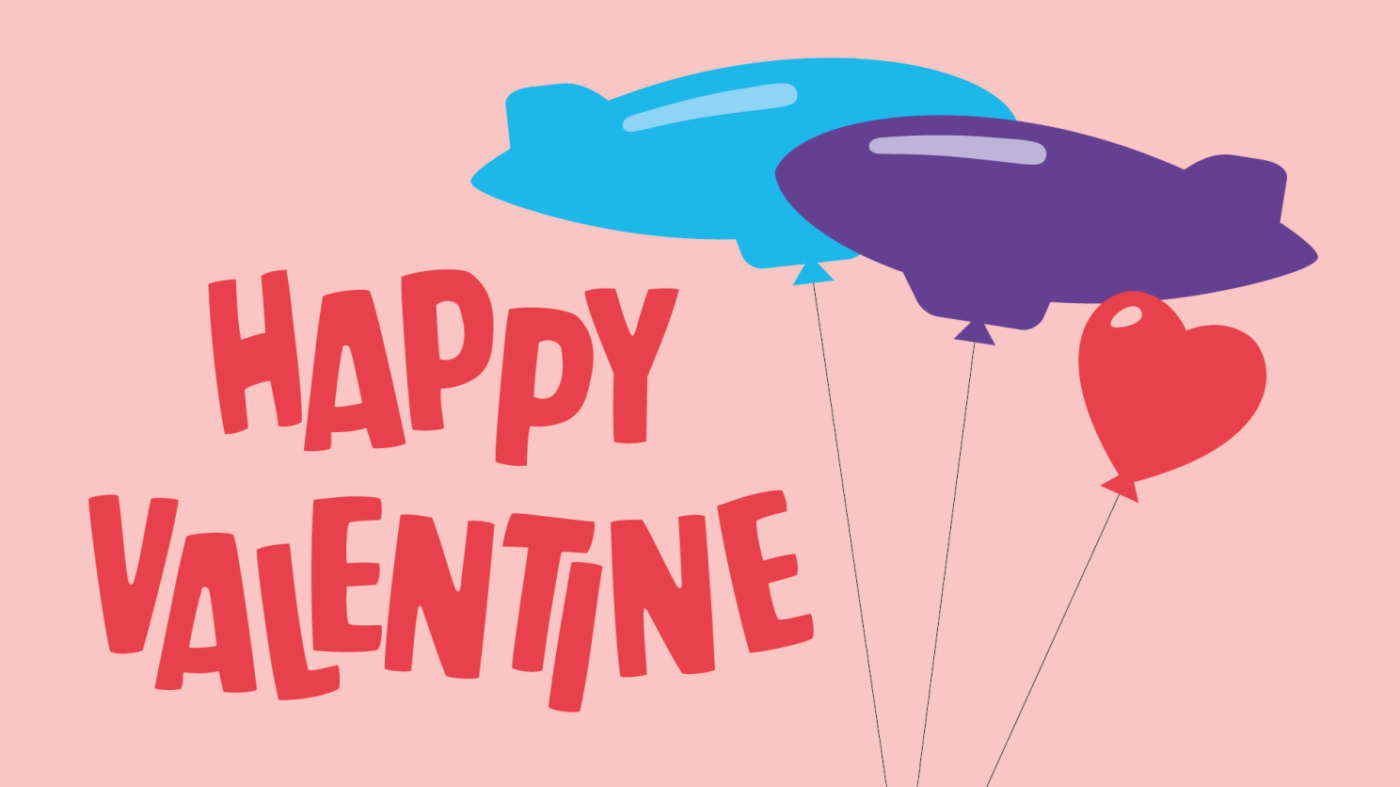
In a world where change is the only constant, the ability to discern fleeting fads from enduring trends is more crucial than ever.
We have highlighted 15 trends that promise longevity and sustainability, transcending the ephemeral nature that characterizes the world of brands, with a focus on positive impact.
Our report, covering over 40 industries and 90 case studies, revolves around 5 pillars derived from our Critical Imprint utility map:
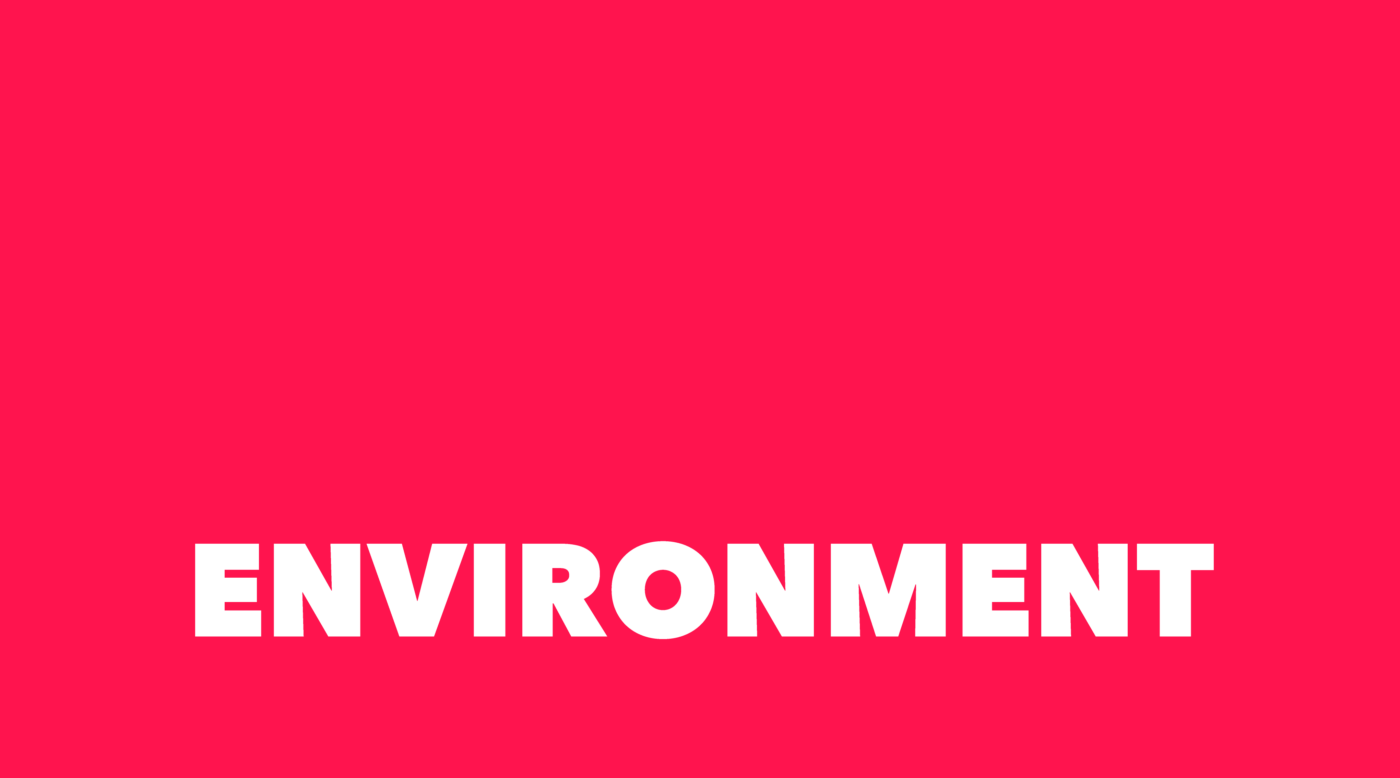
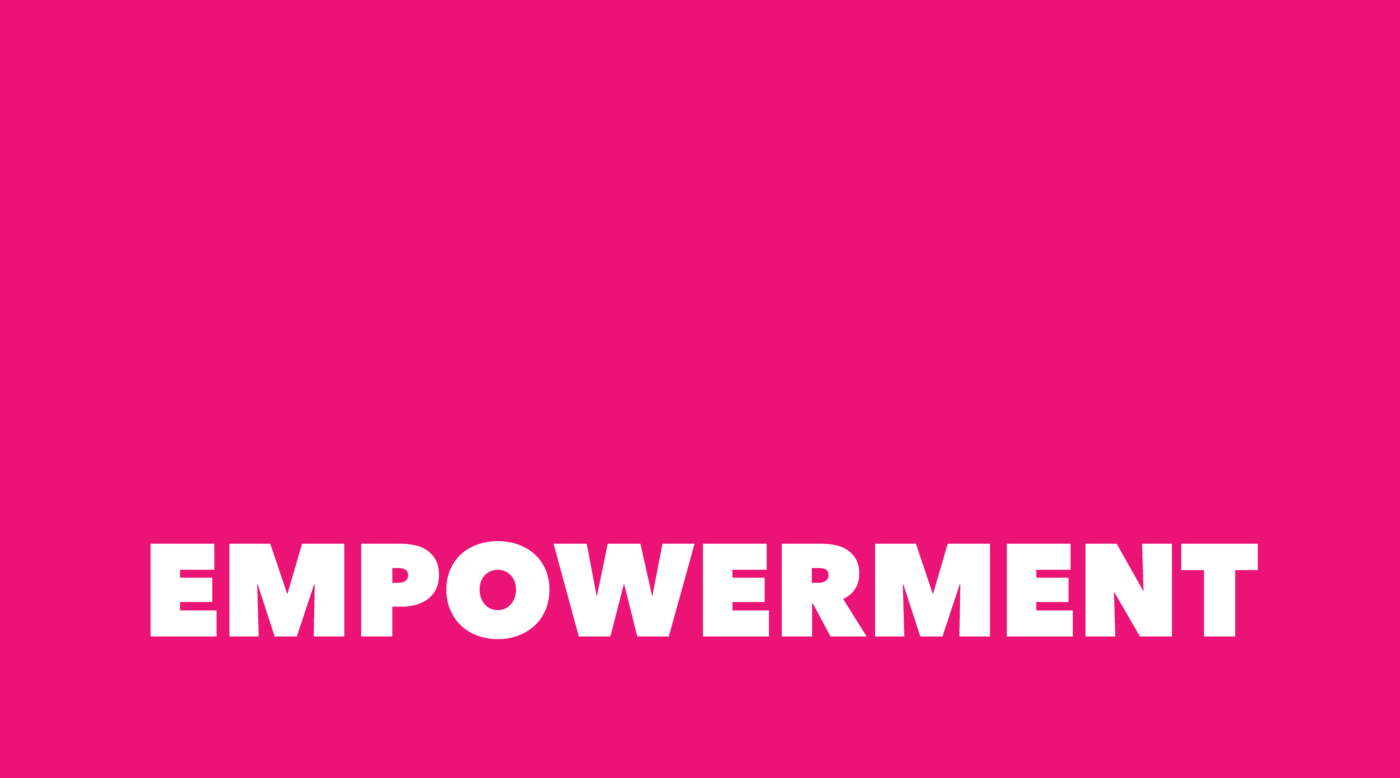
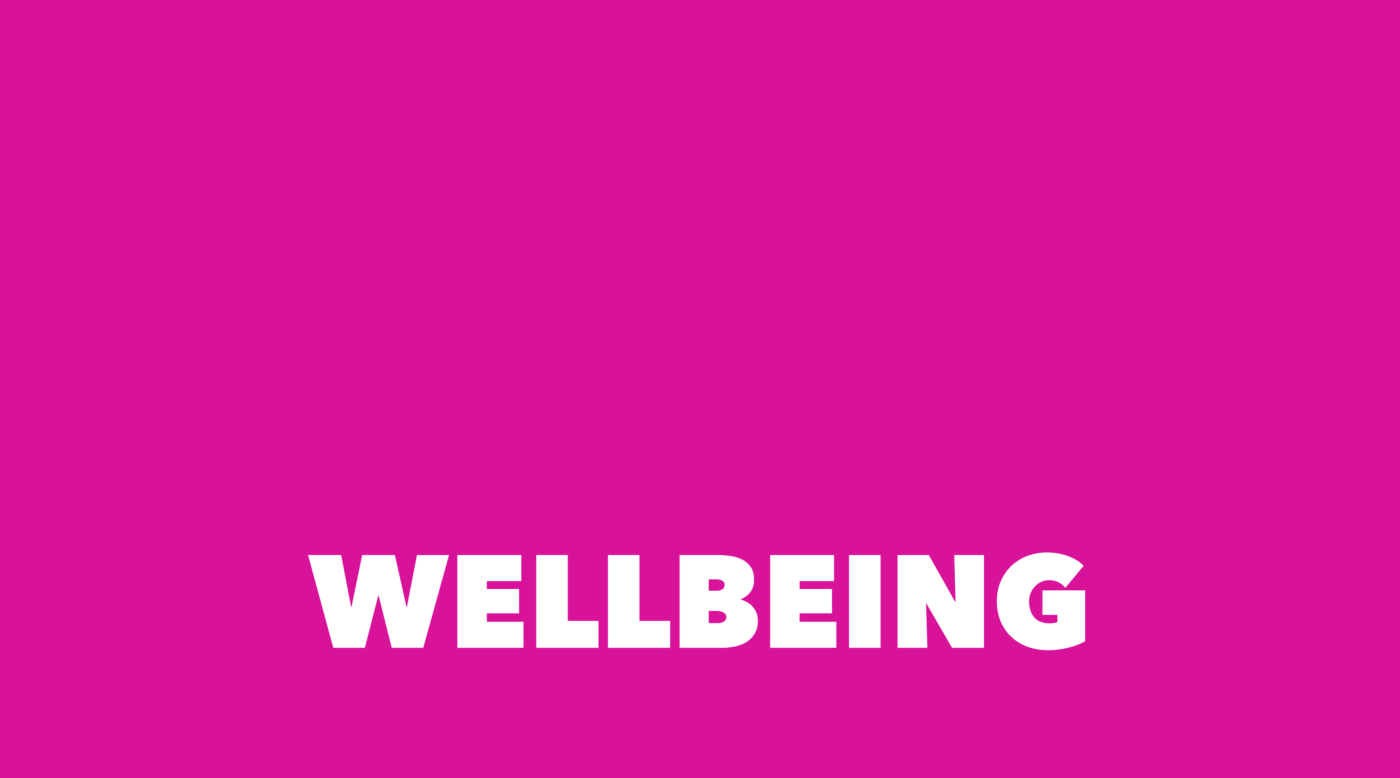

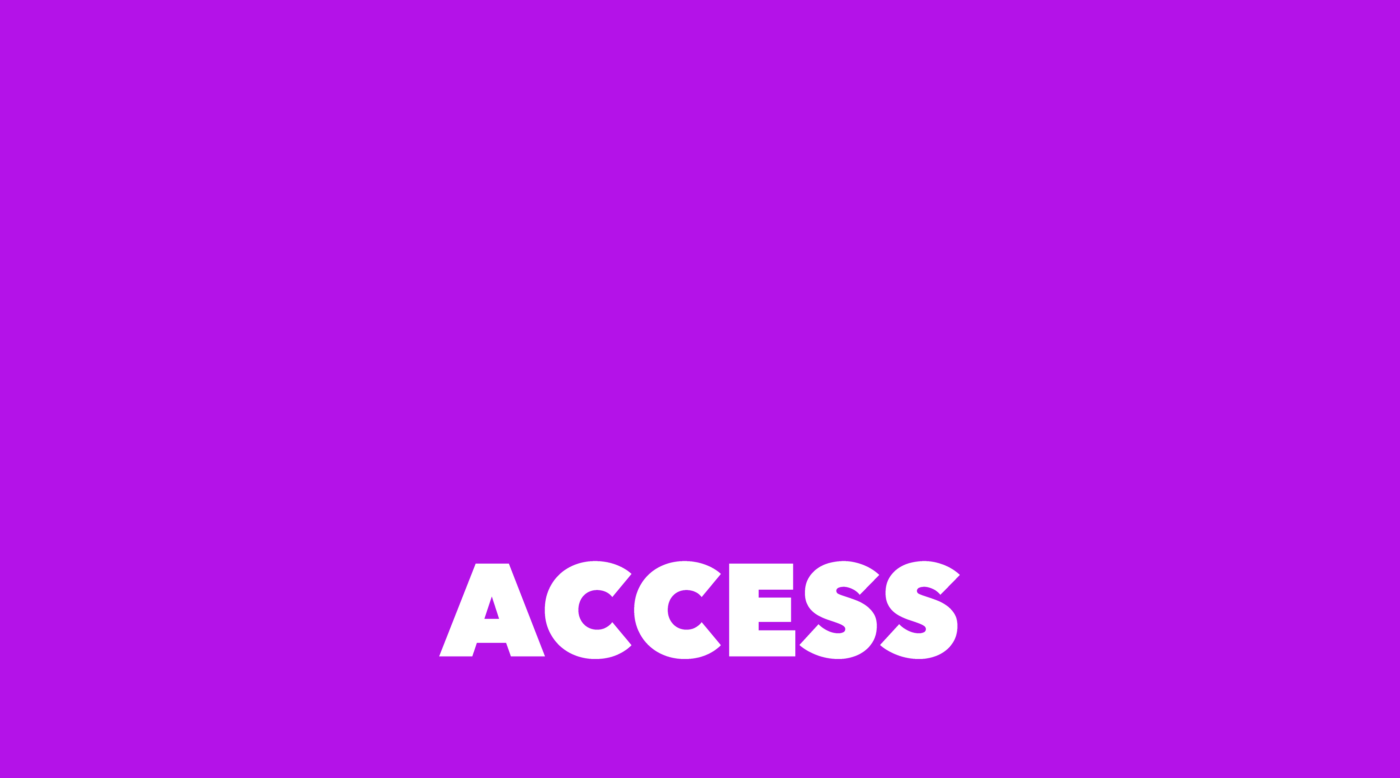
Reinventing raw materials and everyday consumer products is a necessity: we must consider material innovation and reorient product life cycles.
Ancient wisdom is increasingly acknowledged for modern environmental solutions.
continue to gain ground. Brands are increasingly rejecting binary gender norms and traditional aesthetics.
are increasingly adopted by brands for holistic well-being.
… while increasingly, brands integrate behavioral design into their strategies, thus promoting spaces of connection and shared experiences against digital isolation.
Brands are adapting to the rising cost of living by prioritizing cost-effective solutions, while cities worldwide adjust to environmentally friendly micromobility.
As we step into 2024, the question arises: “New year, new trends?” The answer leans towards continuity rather than a complete overhaul. While some fresh trends are set to emerge, the design environment will continue to sustain many of the existing ones.
So, as we step into 2024, what emerging trends will the world give birth to, or which existing trends will it continue to embrace?
As we navigate a rapidly changing world where environmental issues have become more fundamental than ever, sustainability touches every sector, emphasizing its importance in the face of an ever-expanding threat. In the face of this growing threat, design emerges as a key player in the battle against climate change.
Sustainability is no longer just a buzzword; it has become an integral element of both daily consumer life and corporate policies. This serves as the driving force behind the surge of alternative material development, particularly in retail and packaging.
According to Ipsos (2022), almost 60% of the French population intends to ditch excessive packaging in the fight against climate change — a compelling percentage that encourages brands to integrate more eco-design into their production methods. The growing consumer demand for environmentally conscious choices is compelling more and more brands today, and will continue to do so in the future, to commit to responsible packaging design.
Sustainable material choices coupled with responsible manufacturing processes will continue to play a key part in design for 2024.
Chris Wilson, STCKMN
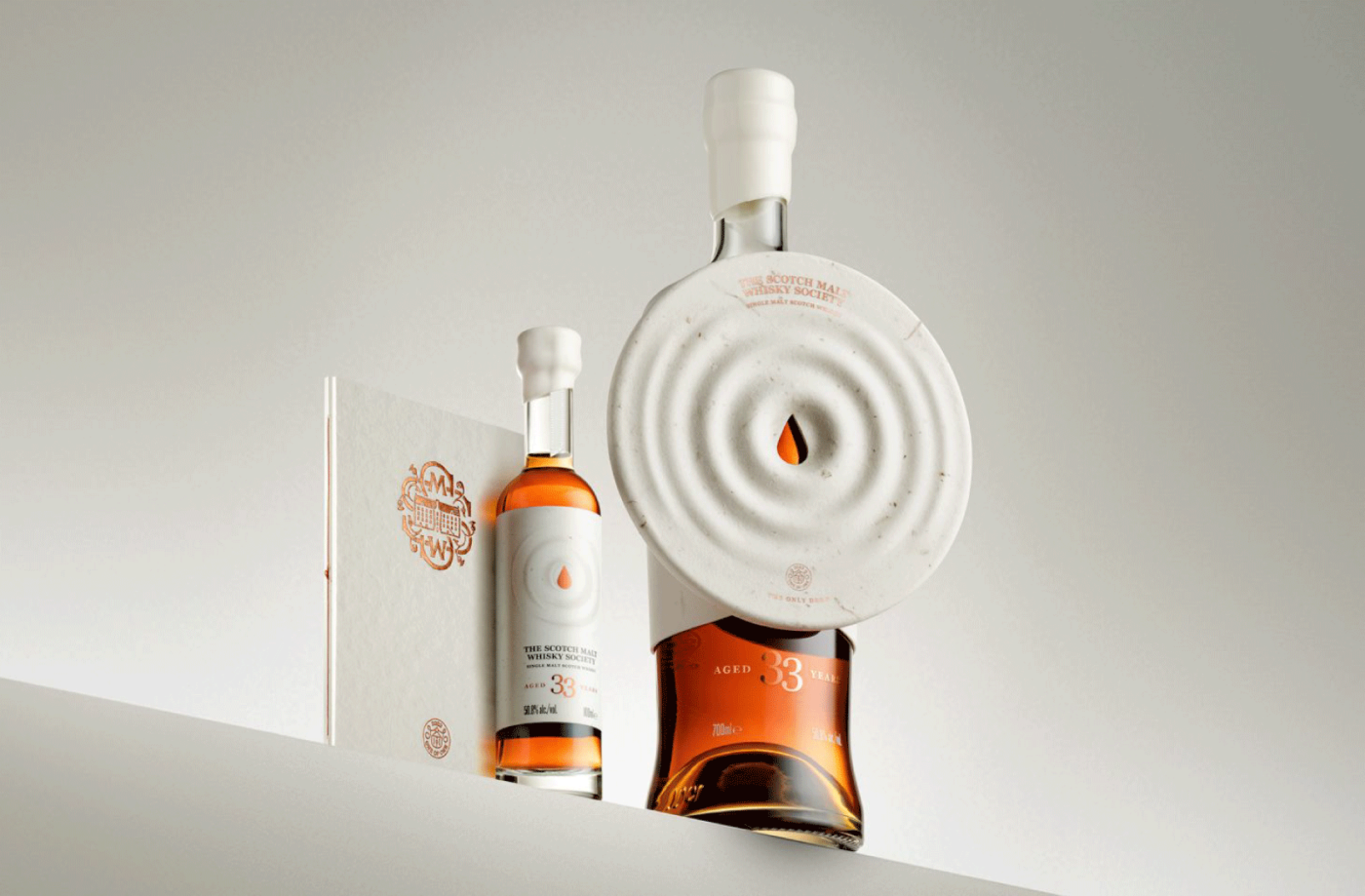
In 2024, biodegradable, compostable, and recyclable packaging, providing alternatives to single-use items, is likely to gain a more prominent role.
The Scotch Malt Whisky Society exemplifies this trend with its handcrafted paper-pulp bottle outer. By making eco-friendly material choices and employing handmade production methods, the bottle not only achieves a luxurious aesthetic but also avoids the greenwashed approach to sustainability.
Design provides a unique opportunity to reconsider our consumption and production patterns. The retail sector is undergoing a significant transformation, adapting to the growing ecological awareness by incorporating environmentally friendly practices into all aspects of the retail process.
Sustainable retail design is now a crucial player in shaping our world’s future. It authentically addresses environmental concerns and aligns with the corporate social responsibility (CSR) initiatives of brands that adopt it.
Examples such as Nescafe’s eco-friendly store in São Paulo, built with biodegradable materials and utilizing algorithmic 3D printing, and VALRHONA’s Parisian store, exclusively crafted with eco-responsible materials, showcase how retail design can innovate spaces while minimizing ecological impact.
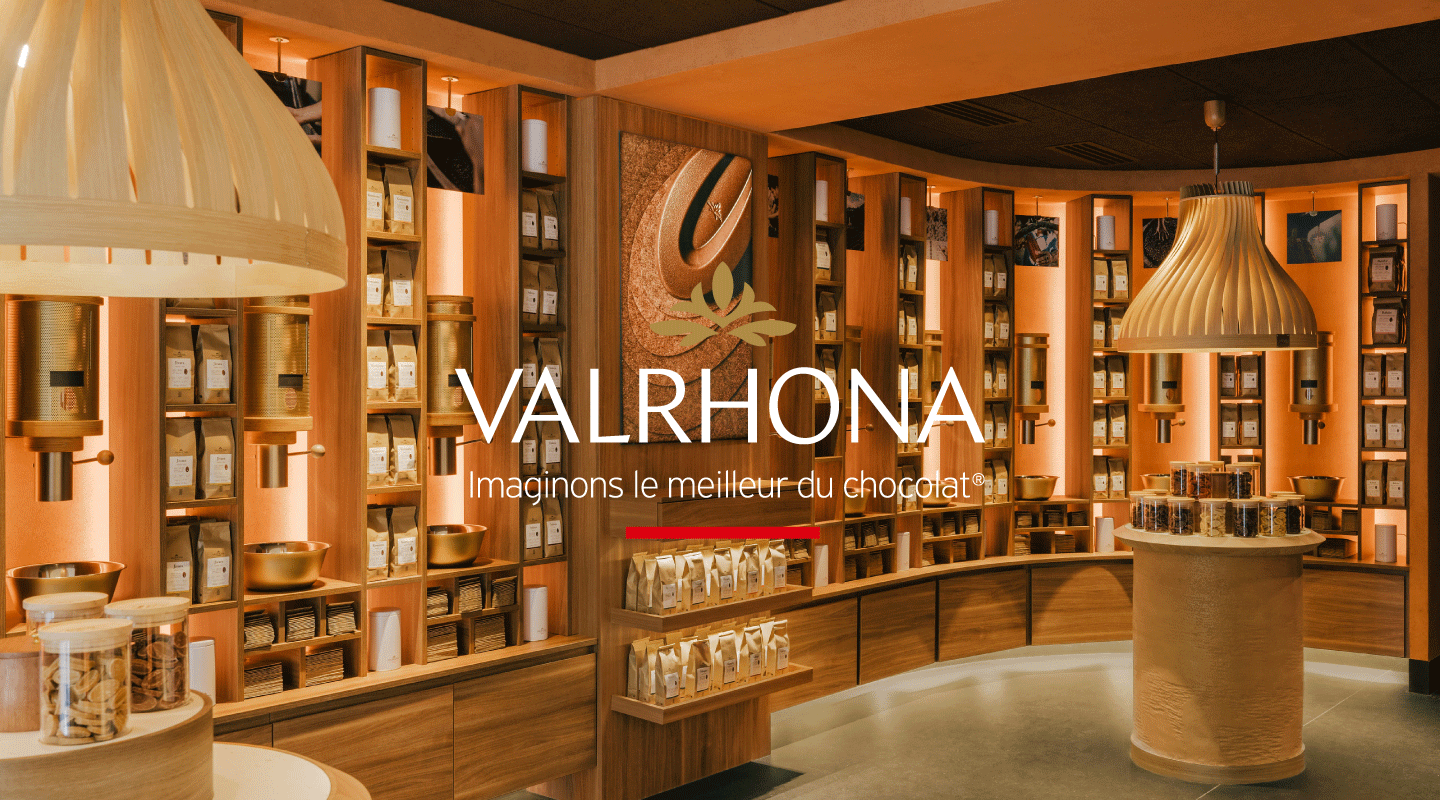
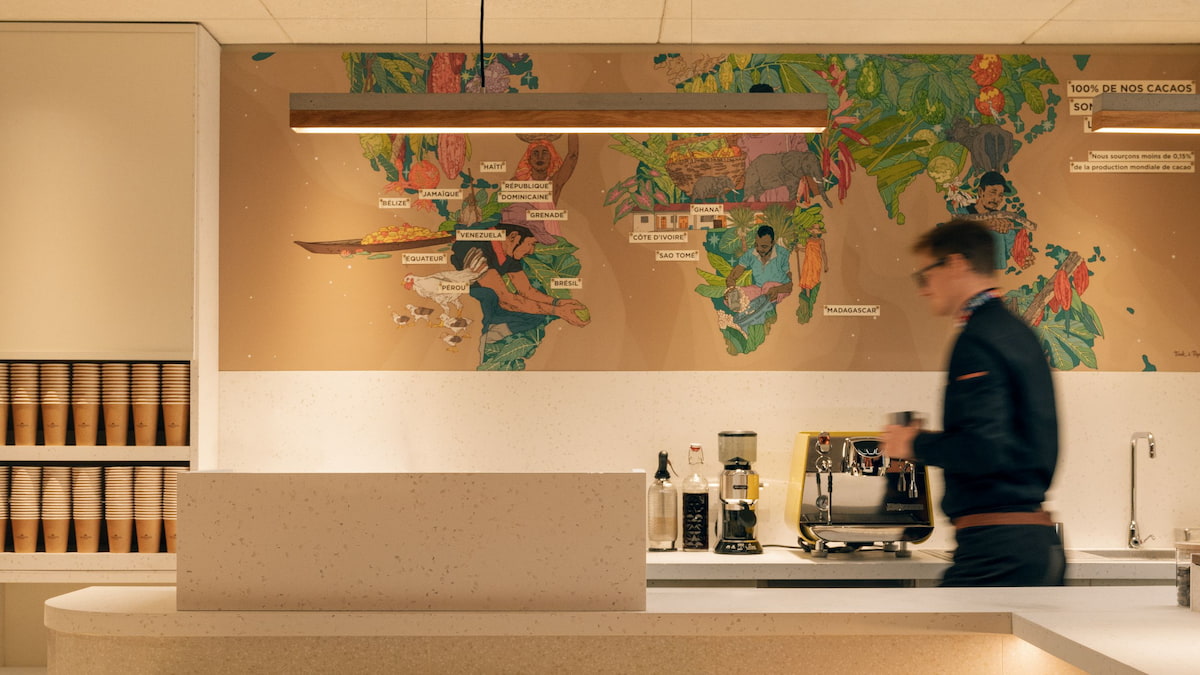
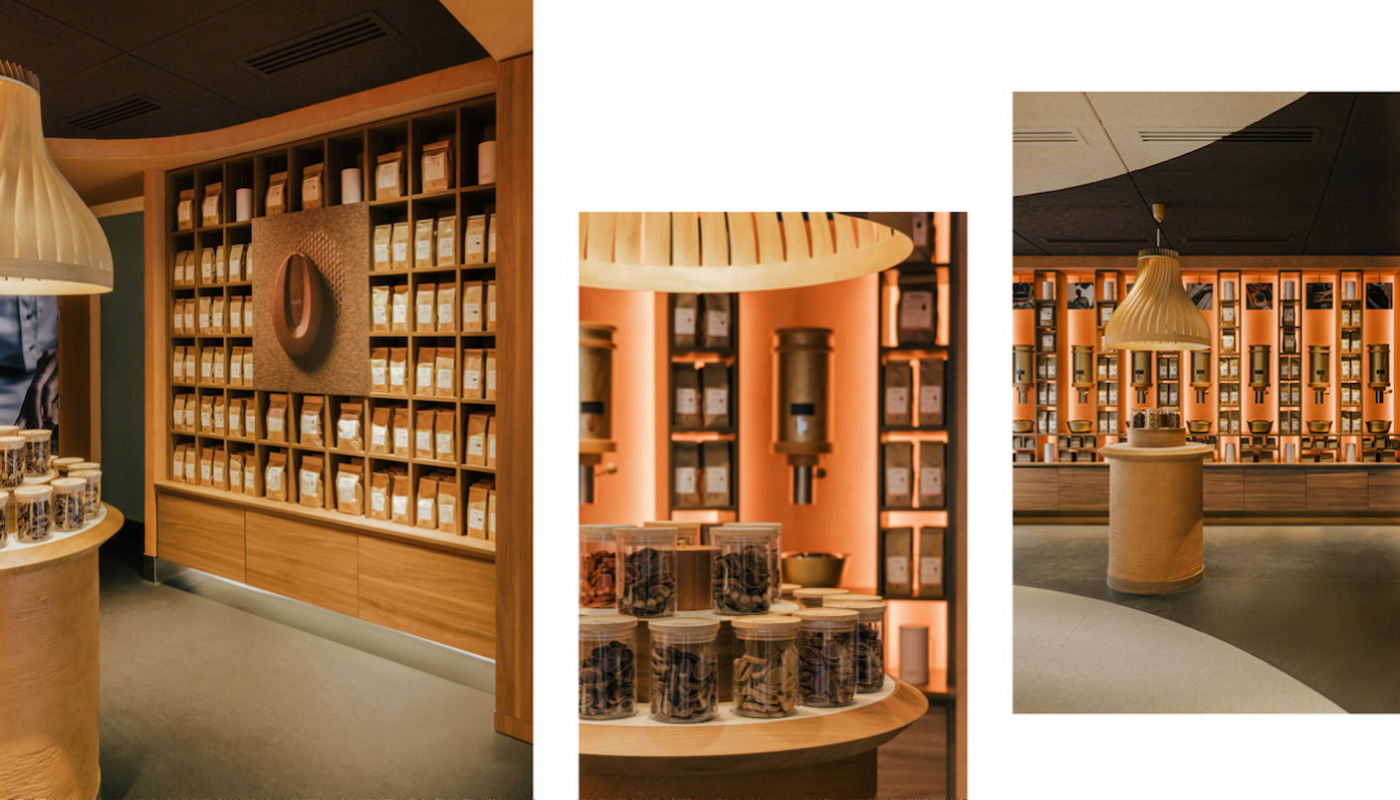


Sustainable retail not only touches brands but also shapes the future dining experience. Practices in the food industry are evolving beyond reducing food waste, with circular design in restaurants representing the next step in eco-friendly dining. Zero Waste Bistro, a pop-up restaurant featured in New York, constructed from recycled food packaging and composting all its leftovers, epitomizes this trend.
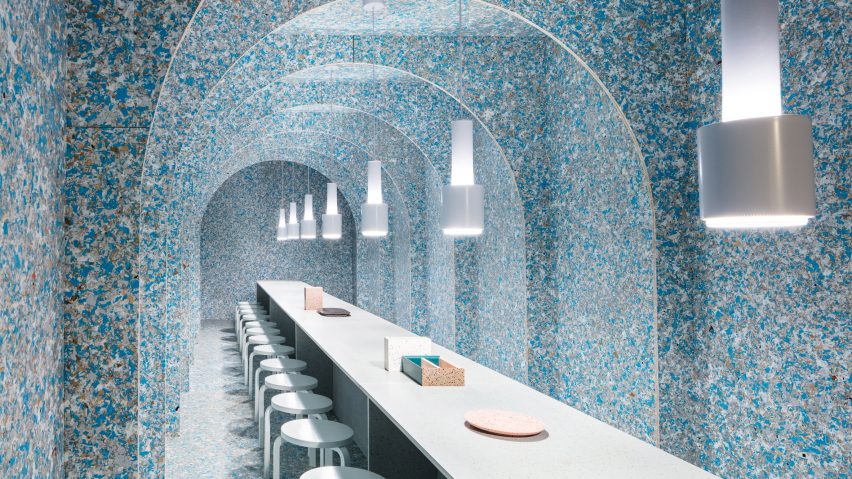
Brands have a powerful role to play, from shaping culture and society to actively creating opportunities for everyone, regardless of age, physical ability, gender, or ethnic origin. Today, designing for accessibility and inclusion transcends ethical considerations; it’s also a lucrative business move, particularly in the technology sector. With more than 1 billion people worldwide estimated to experience disability and over 5 billion internet users, there is a big opportunity for brands to enhance their products and services to be more accessible.
Design is a powerful tool for breaking down barriers, and an increasing number of brands are recognizing its potential. For instance, the MouthPad, developed by Augmental, allows hands-free control of digital devices using the tongue. This inclusive design innovation not only opens new possibilities for people with disabilities to interact with the world but also proves to be useful for enabling high-end multi-tasking for everyone.
Inclusive design is better design, and these technology considerations have the potential to be just as useful to both disabled and non-disabled people.
Josh Loebner, Global Head of Inclusive Design at Wunderman Thompson
Numbers don’t lie: 86% of consumers say a brand’s authenticity impacts their purchasing decision, and a whopping 73% are willing to pay more for products when a company promises transparency. Furthermore, 94% express loyalty to brands that provide transparency.
Today, customers are increasingly drawn to brands that align with their values. Authenticity, as defined by a brand’s openness in showcasing its actions, has become a defining factor. Consequently, transparency is more critical than ever.
Packaging goes beyond mere aesthetic appearance; it’s a powerful tool that communicates a brand’s identity and values. Packaging that includes information about material sustainability, origin transparency, and supply chain traceability enables brands to have transparent communication.

Companies like Oatly, Allbirds, Tenzing, Innocent are actively responding to the demand for transparency by adopting Ecolabels. These actions are becoming the norm, especially among younger consumers. In 2024, we can anticipate seeing even more carbon labeling on shelves as brands continue to prioritize transparency.
Thanks to advanced technology and data analysis techniques like artificial intelligence, brands now access much larger and more detailed customer data. This enables the creation of hyper-personalized consumer experiences, making customers feel valued and understood.
76% of consumers prefer purchasing from brands that personalize user experiences. Brand satisfaction sees a notable 52% increase due to personalization, resulting in an average revenue boost of 10% to 15%. As the numbers clearly indicate, personalization emerges as a highly effective strategy to enhance satisfaction, foster customer loyalty, drive sales growth, gain a competitive advantage, and improve overall brand image.
All the signs point toward a future where hyper-personalization becomes omnipresent. Most of the love brands have already embraced hyper-personalization in their marketing strategies. Therefore, it is crucial for brands to think about how they can outperform competitors and stand out in a competitive market.
Spotify is a perfect example of how a brand can leverage hyper-personalization. Introduced in 2015, “Spotify Wrapped” rapidly evolved into a yearly social media phenomenon. This strategy not only enhances customer loyalty but also significantly boosts brand visibility. The #SpotifyWrapped hashtag has amassed 72.2 billion views on TikTok. Moreover, in the last quarter of 2023, Spotify introduced “Daylist”, an AI-powered playlist that updates multiple times a day to align with the moods and activities of consumers. This continuous evolution highlights Spotify’s unwavering commitment to hyper-personalization, solidifying its position as an industry leader.
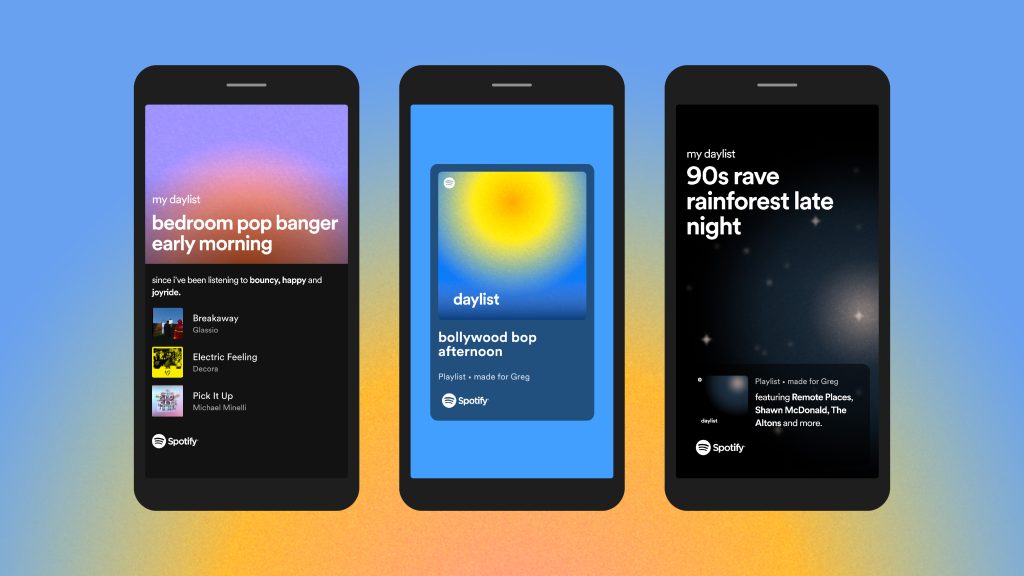
As there is a significant shift towards hyper-personalization, it is essential not to overlook the fact that today, we operate within a privacy-first marketing ecosystem. Zero-party data, referring to information willingly shared by customers with a brand regarding their intentions and preferences, plays a pivotal role in this system. It fosters greater trust with customers, leading to better experiences for them. Therefore, in 2024, with hyper-personalization continuing to surge, zero-party data will be indispensable for any brand’s marketing, personalization, and experience strategy.
Generation Z represents the future of consumers, with an estimated purchasing power of $44 billion. Brands seeking to connect with this generation must understand their tendencies, expectations, and needs.
For Gen Z, gaming isn’t merely entertainment; it’s a way of connecting with friends. Recognizing the potential of video games as a powerful medium to engage with the younger generation, brands are actively leveraging it.
For example, Fortnite stands out as one of the most popular video games among them. In a bid to raise awareness among the younger audience on the International Day of Indigenous Peoples, Fortnite, SOS Amazônia, and the Federation of the Huni Kuĩ People of Acre have partnered to launch “The Originary Map,” which challenges players to protect forests and indigenous peoples.
Throughout this year, a lot of brands, from organizations to luxury houses like Balenciaga, Cartier, and Hermès, have embraced gaming as a strategy to amplify visibility, foster engagement, and establish stronger connections with Generation Z. It is certain that gaming has a significant role to play in 2024.

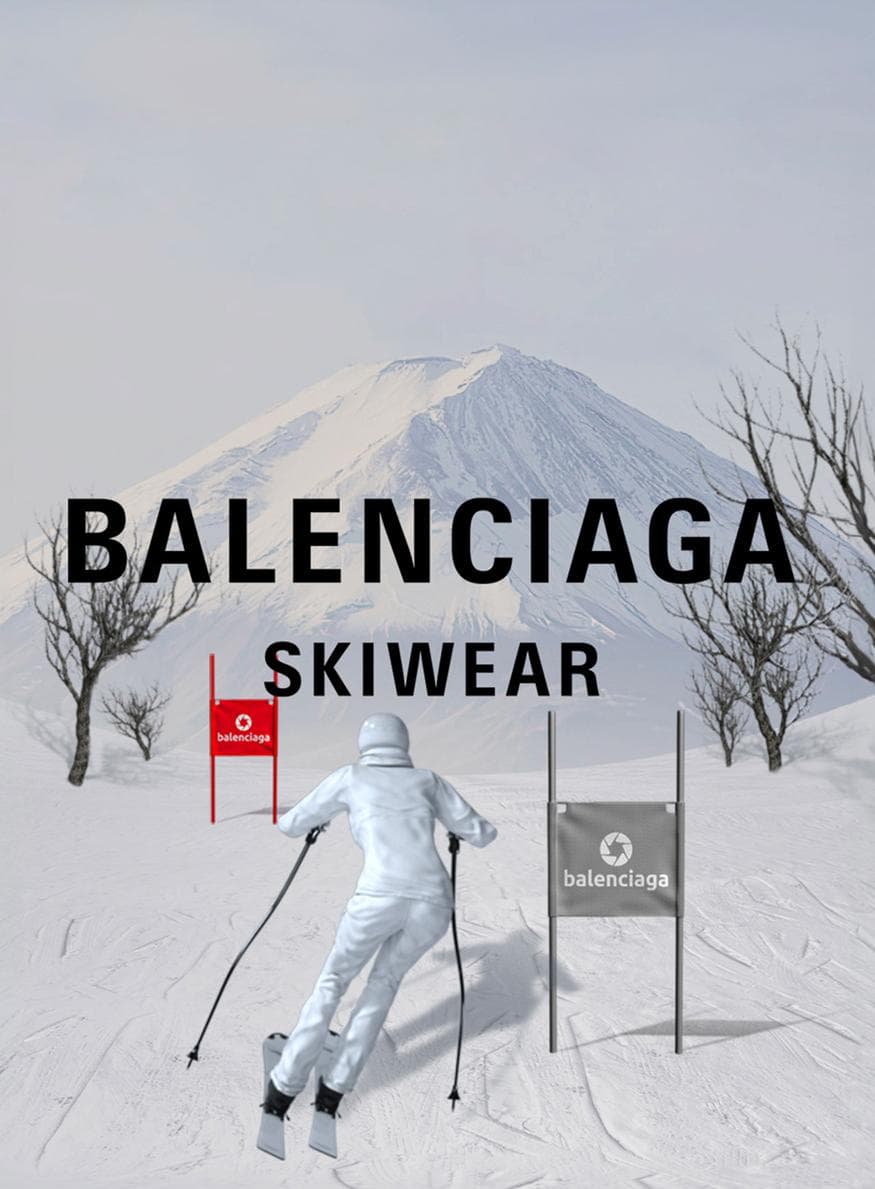
This year has truly been the year of artificial intelligence (AI), emerging as the central force driving innovation across diverse industries. The profound impact of AI on the creative industry cannot be overstated, as it reshapes the strategic thinking of companies and clients in their pursuit of efficiency and better results. While AI opens a new world of possibilities for the creative industry, it also prompts questions about the future landscape. As we look ahead to the trends of 2024, it is clear that the proliferation of generative AI will continue and solidify its position as a transformative force.
In a world characterized by perpetual change, the ability to distinguish fleeting fads from enduring trends is more crucial than ever. For that, we are more than pleased to announce that the third edition of “Useful Design Trends”, our annual exploration of the movements shaping the future of design across a multitude of industries and global markets, will soon be released.
Today we are going to talk about design (no surprise there) but not any design. The design of the future. The one that moves the lines, the one that juggles inclusivity innovation, ecology, and customization. Not that easy to describe this concept as it constantly evolves, in regards to emerging trends in technology, lifestyle, sustainability and culture. However, together we will try to predict the future.
It’s difficult to predict exactly what the design of the future will look like. But, we can identify some current trends that could influence the design of the future. What will be the main pillars of the new consumers? What will be the emerging aspirations that brands will have to consider? Here’s a non-exhaustive list to help you see this more clearly.
Today we are going to talk about design (no surprise there) but not any design. The design of the future. The one that moves the lines, the one that juggles inclusivity innovation, ecology, and customization. Not that easy to describe this concept as it constantly evolves, in regards to emerging trends in technology, lifestyle, sustainability and culture. However, together we will try to predict the future.
It’s difficult to predict exactly what the design of the future will look like. But, we can identify some current trends that could influence the design of the future. What will be the main pillars of the new consumers? What will be the emerging aspirations that brands will have to consider? Here’s a non-exhaustive list to help you see this more clearly.
Designers are looking to create products that minimize environmental impact and are sustainable; like Cazoolo which is Braskem’s packaging design lab. It’s an innovative hub that hosts a creative community, where consumers, entrepreneurs, designers or startups can meet to rethink packaging from a more sustainable design approach, designing the entire process -from conception to post-consumption- with a view to circularity and reducing environmental impact. Indeed, the watchword will be -and already is- to be more sustainable and environmentally friendly with recyclable materials, environmentally friendly manufacturing processes and reusable products.
Designers are looking to create products that minimize environmental impact and are sustainable; like Cazoolo which is Braskem’s packaging design lab. It’s an innovative hub that hosts a creative community, where consumers, entrepreneurs, designers or startups can meet to rethink packaging from a more sustainable design approach, designing the entire process -from conception to post-consumption- with a view to circularity and reducing environmental impact. Indeed, the watchword will be -and already is- to be more sustainable and environmentally friendly with recyclable materials, environmentally friendly manufacturing processes and reusable products.
Added to this is the fact that new consumers are looking for authenticity and simplicity above all! This means products that are honest, transparent, with a clear history or origin. No more products that are industrially produced or have a very (too) complex list of ingredients.
Added to this is the fact that new consumers are looking for authenticity and simplicity above all! This means products that are honest, transparent, with a clear history or origin. No more products that are industrially produced or have a very (too) complex list of ingredients. Some brands are already offering the experience of truth in fighting the absurdity of the food industry, like the brand, .nod.
This development is partly linked to a growing awareness of the environmental and social impact of consumption. In the end, consumers are looking for brands that match their values and lifestyle, and that are in line with their worldview.
Added to this is the fact that new consumers are looking for authenticity and simplicity above all! This means products that are honest, transparent, with a clear history or origin. No more products that are industrially produced or have a very (too) complex list of ingredients. Some brands are already offering the experience of truth in fighting the absurdity of the food industry, like the brand, .nod.
This development is partly linked to a growing awareness of the environmental and social impact of consumption. In the end, consumers are looking for brands that match their values and lifestyle, and that are in line with their worldview.
Let’s continue our predictions with innovation and technology. How can we miss this growing phenomenon that promises to bring many benefits to our society? Our media is being invaded by ChatGPT, AI, Metaverse and many others. These technological advances could transform the way we design our products, services and spaces. Virtual and augmented realities could enable immersive experiences in virtual environments, while 3D printing could allow for increased customization of products. This could greatly enhance the user experience by allowing consumers to interact with brands and the products they offer.
These technological developments will also allow brands to offer consumers a personalized experience based on their preferences and needs.
One of the key pillars for companies will be to address the needs of ALL users by reaching out to audiences previously invisible to certain markets with more accessible and inclusive designs that will have to become the norm. Some brands have already understood this, such as Dove with its commitment to body positivity #NeverBeforeRetouch and its “Real Virtual Beauty” campaign, challenging the representation of women in video games to help make the virtual world a positive space for everyone. Inclusivity is no longer a niche market, it’s and will be part of our daily lives and values!
One of the key pillars for companies will be to address the needs of ALL users by reaching out to audiences previously invisible to certain markets with more accessible and inclusive designs that will have to become the norm. Some brands have already understood this, such as Dove with its commitment to body positivity #NeverBeforeRetouch and its “Real Virtual Beauty” campaign, challenging the representation of women in video games to help make the virtual world a positive space for everyone. Inclusivity is no longer a niche market, it’s and will be part of our daily lives and values!
To conclude, it’s important to note that design is a constantly evolving field and that these trends are only forecasts; the future is unpredictable. These trends can change rapidly depending on political, economic, social and technological events in the world.
Inclusive design… a broad topic for a diverse society. Is it still necessary to talk about it? Some will say that the issue is already resolved, but is it really the case? Have brands really taken the issue to heart? Don’t you think that we first need to admit that we are not inclusive to become so? Let’s explore this together.
Let’s start by reminding ourselves: what is inclusive design? It is an approach to design that aims to create products, environments, services, and technologies that are accessible and usable by a wide range of people, including those with specific needs or different abilities.
The main goal of inclusive design is to break down barriers and ensure that everyone, regardless of age, physical ability, gender, or ethnic origin, has the promise of being able to participate fully in society equally.
In an increasingly diverse society, inclusive design has become a major issue; it is an ethical and responsible approach that helps to combat exclusion and promote inclusion. The statistics speak for themselves. According to a recent study by the World Health Organization (WHO), more than 1 billion people in the world live with some form of disability. This would represent a purchasing power exceeding 8 billion dollars according to the Global Economics of Disability report.
Brands that integrate inclusive design into their DNA will not only meet a growing demand but also an ethical necessity while expanding their consumer base but also contributing to creating a more equitable society.
A handful of brands have embraced this philosophy, transcending the limits of the conventional to create products and experiences that touch each of us. Take Apple, the famous technology company is recognized for its commitment to accessibility. Features like VoiceOver, which makes iOS devices usable by people who are blind, demonstrate how technology can be a force for inclusion.
There is also inclusive packaging, which are more than just packaging. They are a way to celebrate diversity and inclusion.
The famous Nestlé biscuit brand, present in Brazil for over 30 years, launches, in collaboration with CBA B+G, a limited edition with illustrations of the alphabet of the Brazilian sign language. This initiative aims to promote learning and inclusion, while bringing a little fun to children.
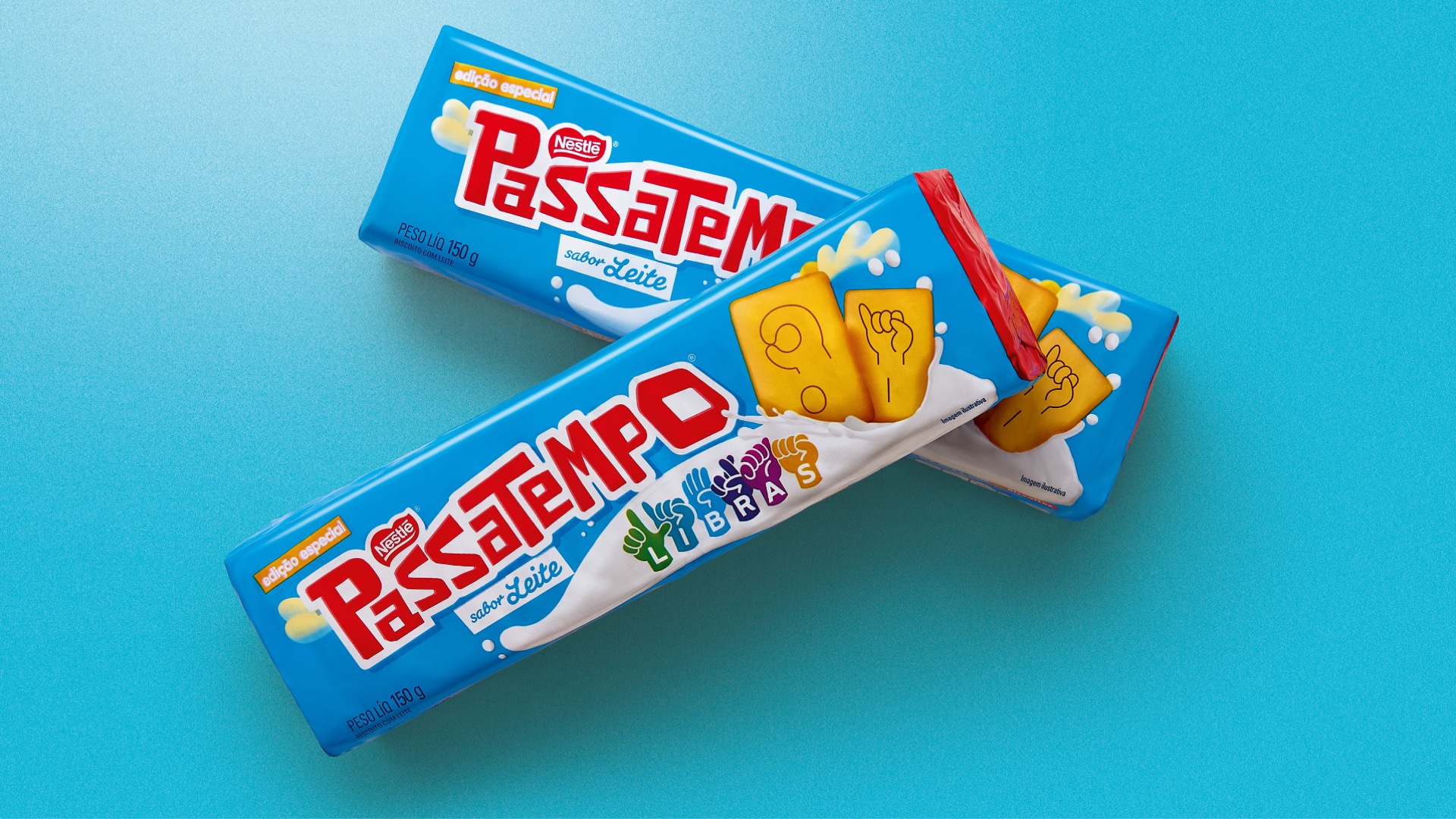


Having or embodied inclusive design is not so simple. Inclusive design is an approach that must be integrated from the beginning of the design process. It is not a feature that can be added or removed at will, but a philosophy that should guide the entire creative process. Indeed, it is not necessary to include this notion once the work is launched; it is recommended to integrate reflection on inclusion from the early stages of design.
One of the major points to start with will be to understand your targets: who are they? Their habits? Their needs? To consider perspectives and experiences other than our own, we can rely on studies or address people directly. The objective is to take advantage of human diversity, by integrating different points of view and learning from each other.
To do this, it is important to understand how people adapt to the world around them, taking the time to put themselves in their shoes. Empathy is an essential skill for designing inclusive products and services.
This gives us the urge to jump on a project led by the LEGO brand. In the UK, the group collaborates with Diversity Roles Models, an organization that educates children about empathy and inclusion. The brand also works with Workplace Pride to measure and adjust LGBTGQ+ representation and inclusion within the group.
This commitment was naturally translated into June 2023, with the marketing of “everyone is awesome” which pays tribute to diversity. The pack consists of a rainbow background and 11 monochrome figurines. Each figurine has its own color and matching wig. The colors are not chosen at random: they take up those of the LGBTQ+ flag, those of the transgender community as well as the diversity of skin colors with black and brown. This set is a beautiful representation of love and open-mindedness. It encourages children to accept and celebrate differences. 🌈

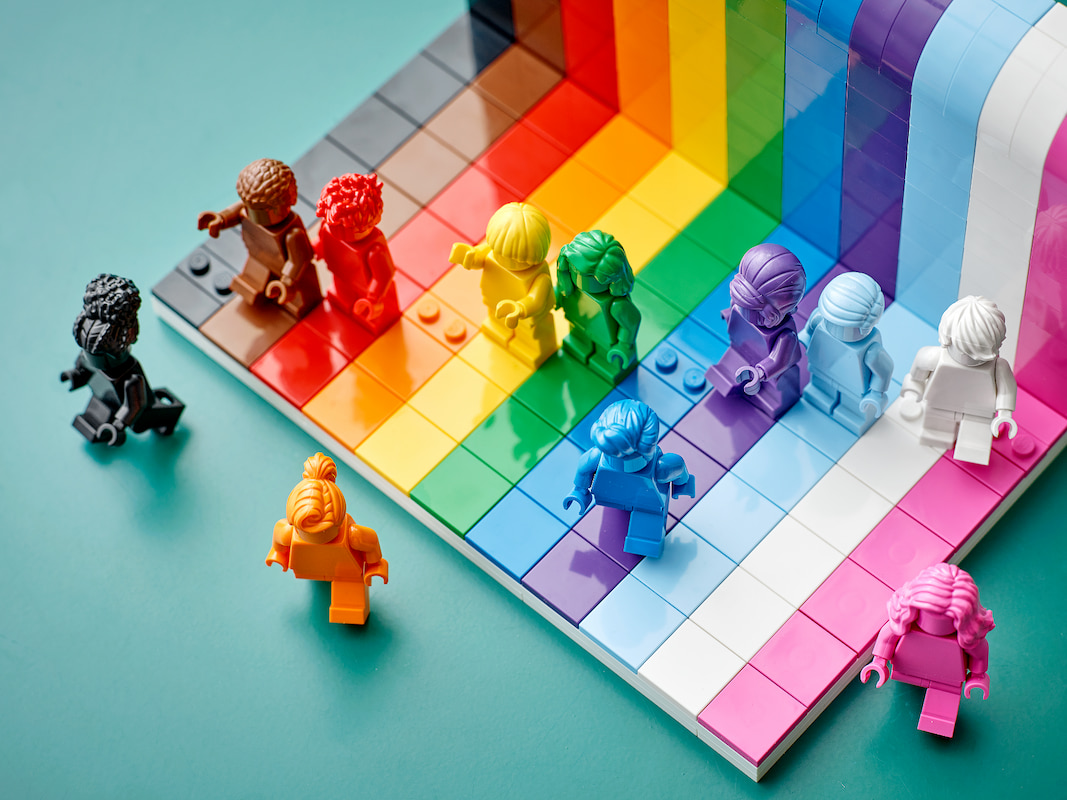
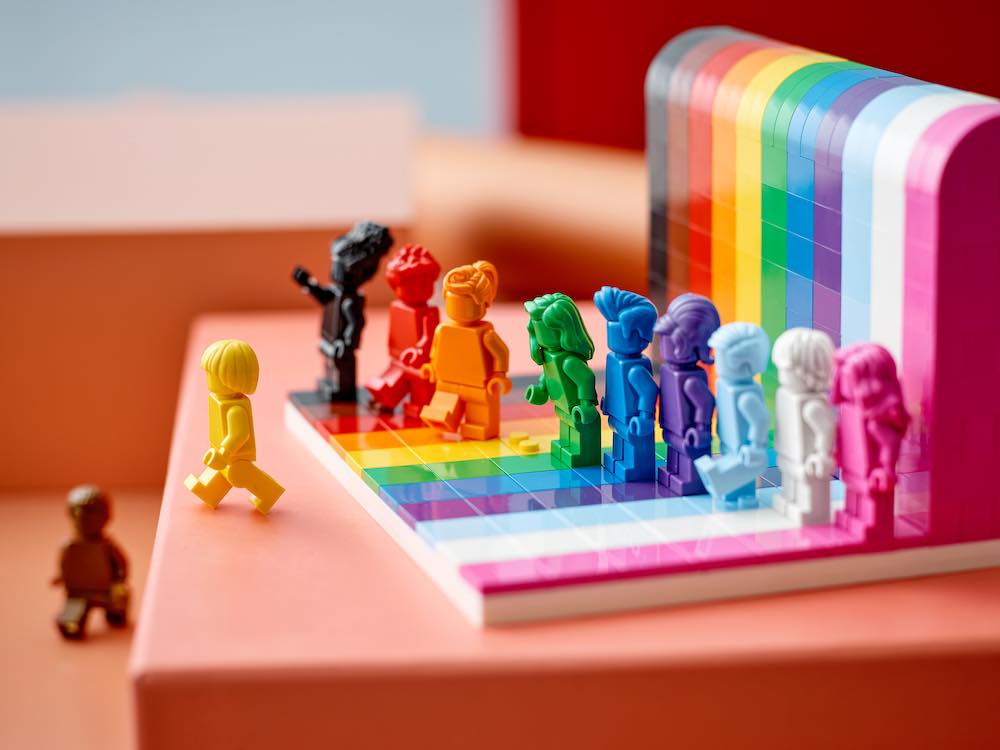
At CBA, we don’t see inclusive design as a trend, but as a responsibility. Each member of our team is trained to understand the diverse needs of our clients and to integrate them into our creations. Our creative process is based on inclusion, ensuring that our campaigns, websites, and communication materials are accessible to everyone.

The latest project from our studio CBA B+G, the brand strategy for an innovative company driven by agro-ecology, Raízes do Campo is a concrete illustration of our commitment. We created the brand voice, with the tone of voice, manifesto, and storytelling of the brand. It was a real challenge to define the declaration of intent for the different links in the chain, with an inclusive message, to cover the diversity of stakeholders (producers, cooperatives, retailers, end consumers, as well as employees and investors).
Many brands aspire to create inclusive projects, communicate with a wide range of people and reach different audiences. However, this aspiration can sometimes prove to be a major challenge. As mentioned earlier, there are steps to follow before designing a truly inclusive project. It is important to note that simply stating “I want to be inclusive” is not enough.
Take the example of the oui.sncf app, which transformed into sncf-connect overnight! A brutal launch, accessibility was not thought out in the smallest corners, and the result? “Disappointing”, “Difficult to read”, “Not great”, “Frustrating”, “Not at all up to par”, “The least successful update of the century”, “A disaster”, … Dissatisfied users and add to that a lack of readability, you will get a flood on social networks and a failed launch. However, despite some setbacks, the brand has been able to question itself and improve its application over the months so that it can be accessible to the greatest number.
Knock knock? Who’s there? The sweetest and spookiest of all the holidays: Halloween. If you think that Halloween is all about kids, costumes, and candy… you’re wrong. It’s a serious business opportunity for brands to boost their sales and connect with consumers. So, hop on your broomsticks, and let’s delve into how brands leverage this spooky holiday to their advantage.
According to The National Retail Federation’s annual Halloween consumer survey conducted by Prosper Insights & Analytics, Halloween spending in 2023 was expected to reach a staggering $12.2 billion in the United States. In fact, Halloween is the second-largest retail holiday in the US, after Christmas. And this enchantment isn’t limited to the U.S. alone; the United Kingdom now regards it as the third most significant event on its retail holiday calendar. The allure of Halloween is spreading globally, making it a golden opportunity for brands to intensify their marketing efforts and capture attention.
Over the past decade, Halloween has undergone a remarkable transformation. It’s no longer just about sweets and treats; industries like cosmetics and apparel have experienced a significant surge in demand. This evolution highlights the vast potential for brands, regardless of their industry, to seize the Halloween season and utilize it to their advantage, even if their products don’t traditionally align with the “Halloween norm”.
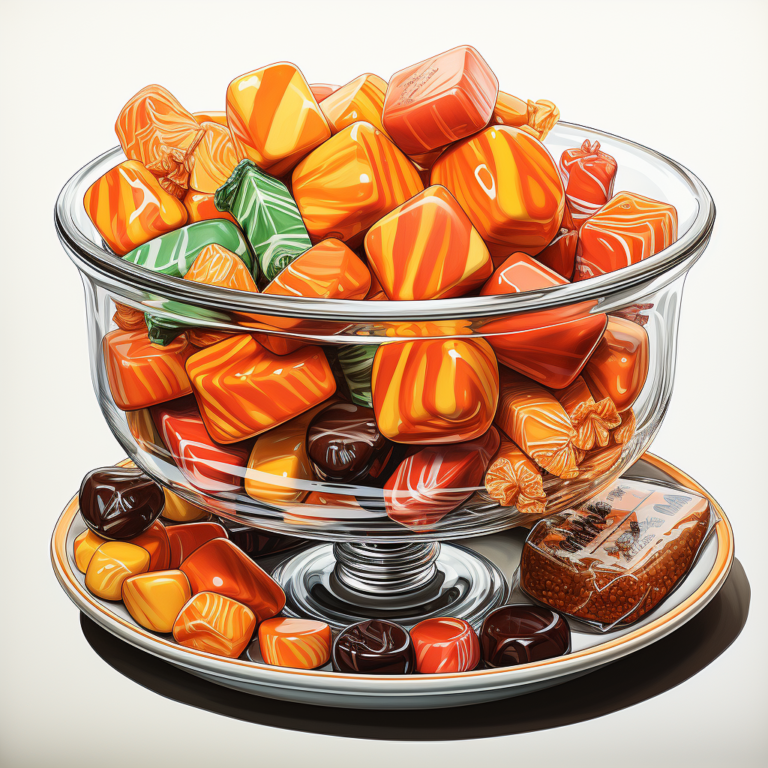
Over the past decade, Halloween has undergone a remarkable transformation. It’s no longer just about sweets and treats; industries like cosmetics and apparel have experienced a significant surge in demand. This evolution highlights the vast potential for brands, regardless of their industry, to seize the Halloween season and utilize it to their advantage, even if their products don’t traditionally align with the “Halloween norm”.

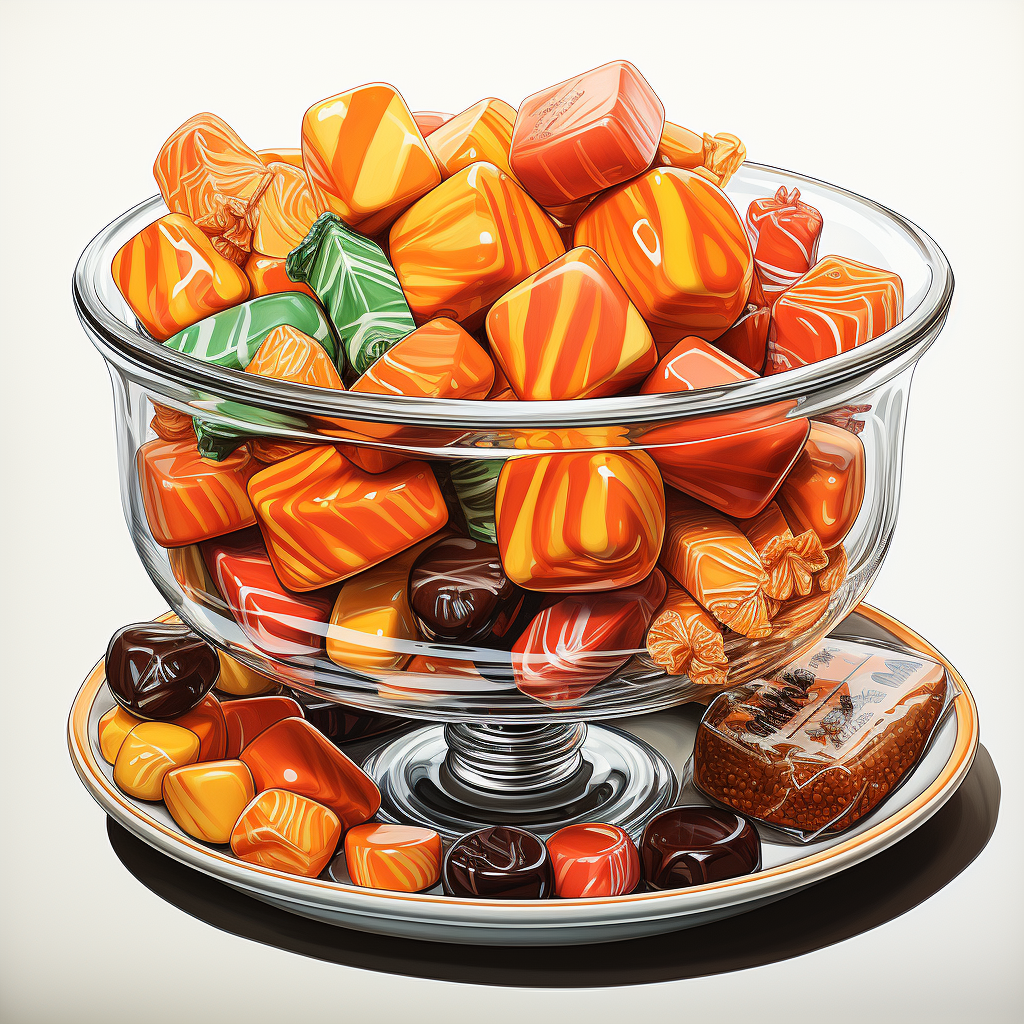
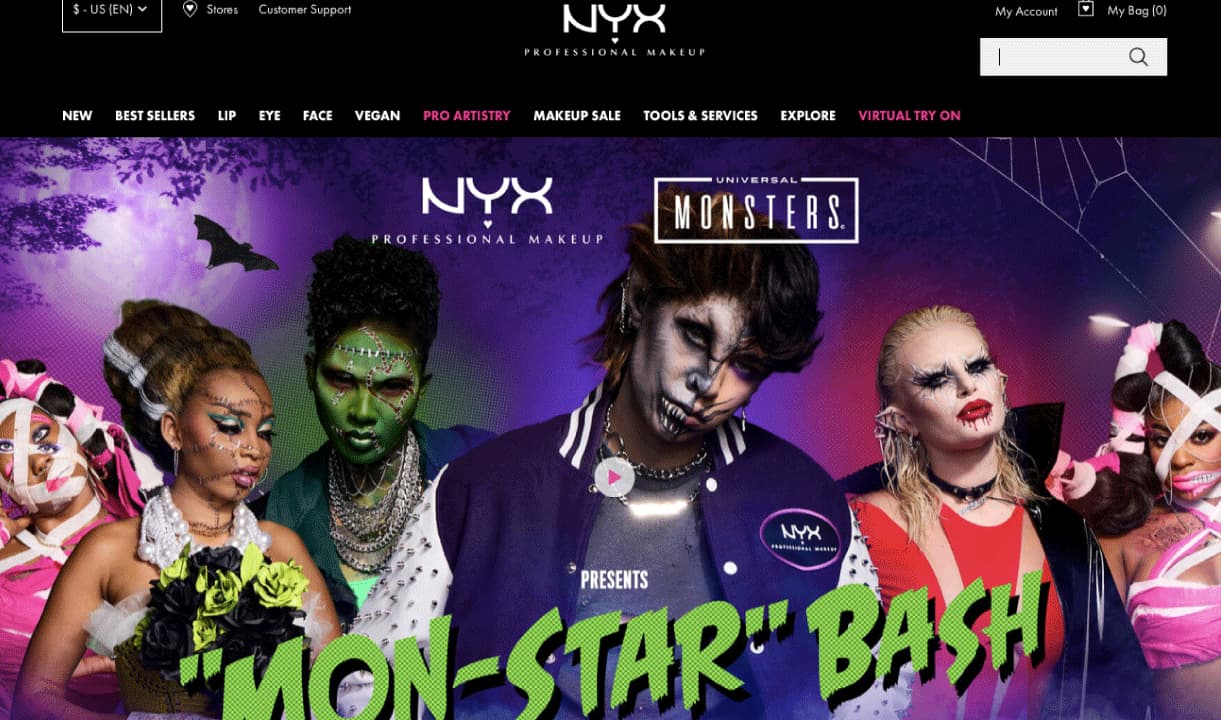
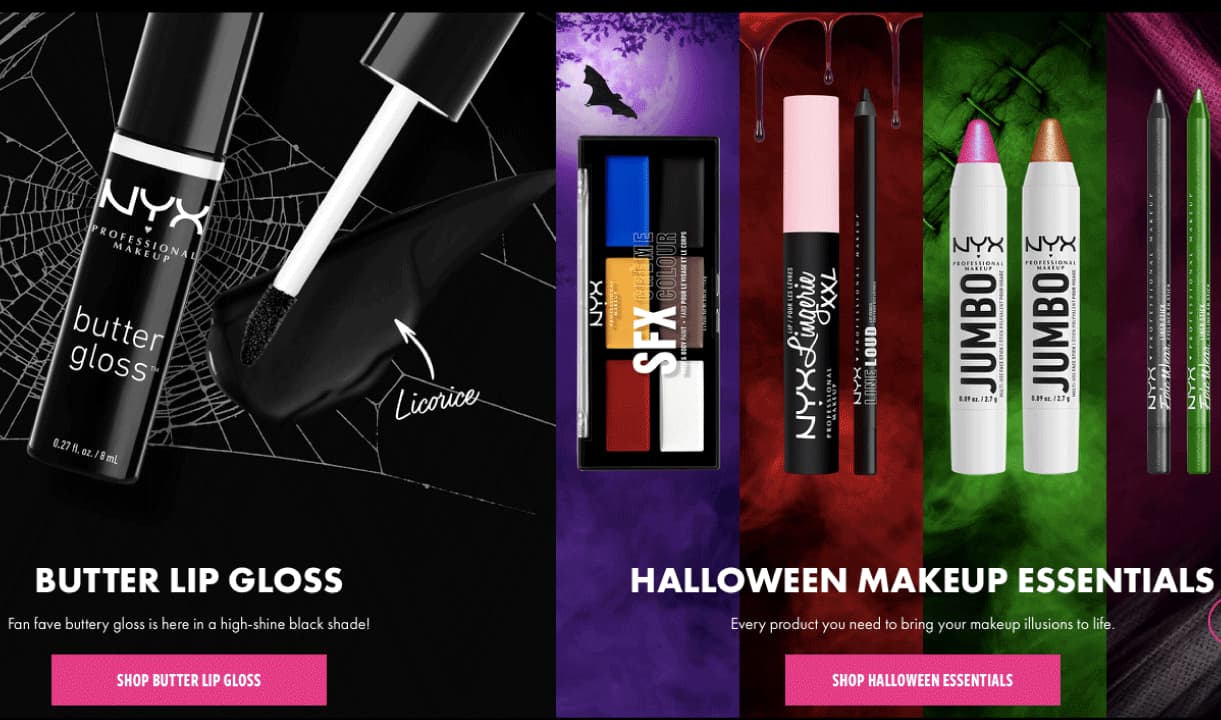



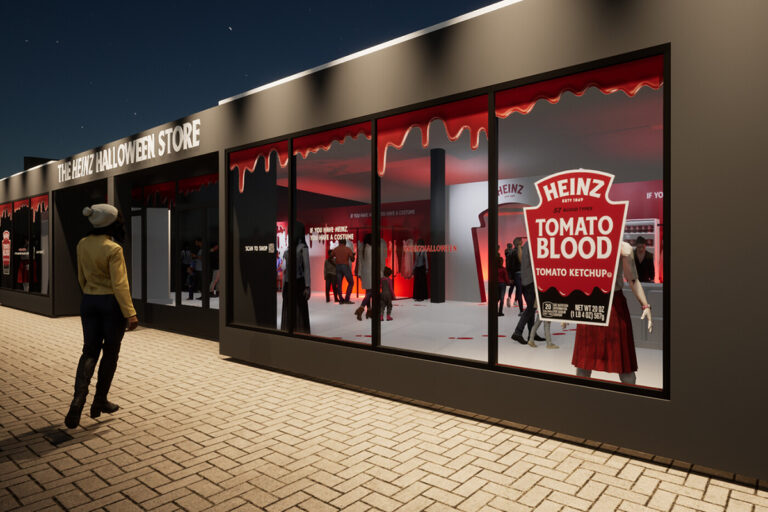
In recent years, Heinz got into the Halloween spirit with a playful twist. They transformed their ketchup into “Tomato Blood” complete with a spooky label, aiming to be a part of the full Halloween experience. To top it off, Heinz set up a pop-up store in LA where people could create costumes using this fake blood and offered a Halloween Heinz Blood costume kit. It’s a good example of a brand immersing itself in Halloween and creating a product connection that goes beyond the ordinary.
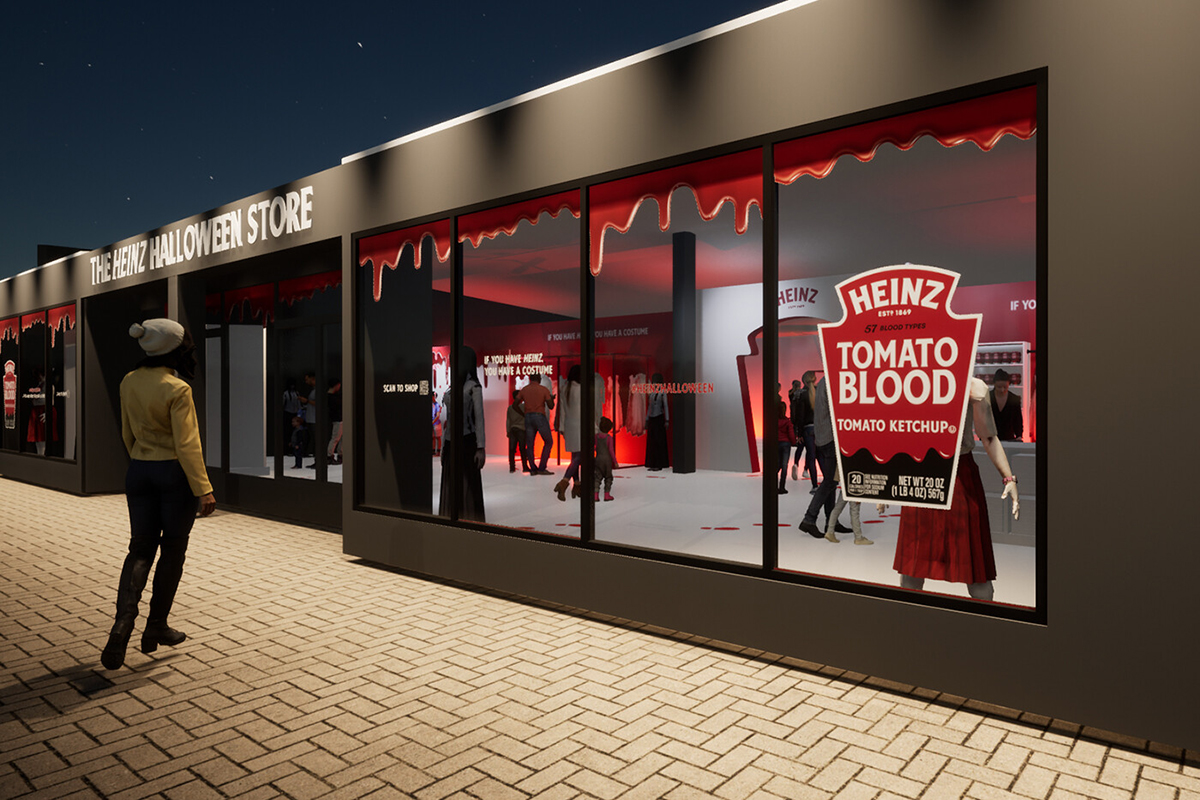
In recent years, Heinz got into the Halloween spirit with a playful twist. They transformed their ketchup into “Tomato Blood” complete with a spooky label, aiming to be a part of the full Halloween experience. To top it off, Heinz set up a pop-up store in LA where people could create costumes using this fake blood and offered a Halloween Heinz Blood costume kit. It’s a good example of a brand immersing itself in Halloween and creating a product connection that goes beyond the ordinary.

Brands are in fierce competition to claim their share of consumer spending, and two critical aspects they need to master are outshining their competitors and grabbing the consumer’s attention.
Holidays offer a prime opportunity for brands to stand out, and Halloween is no different. It serves as the ideal occasion for companies to inject creativity into their marketing campaigns, whether their goal is to spook, thrill, or amuse their target audience. Regardless of their typical offerings, Halloween empowers brands to unleash their creativity.
For instance, in 2017, Burger King playfully taunted their fast-food rival, McDonald’s, with the tagline “Come as a clown, eat as a king“. They offered their signature burger to the first 500 people dressed as creepy clowns, cleverly alluding to McDonald’s mascot. This ingenious move generated a remarkable 2.1 billion earned impressions, illustrating the potent impact of creative Halloween marketing.

For instance, in 2017, Burger King playfully taunted their fast-food rival, McDonald’s, with the tagline “Come as a clown, eat as a king“. They offered their signature burger to the first 500 people dressed as creepy clowns, cleverly alluding to McDonald’s mascot. This ingenious move generated a remarkable 2.1 billion earned impressions, illustrating the potent impact of creative Halloween marketing.

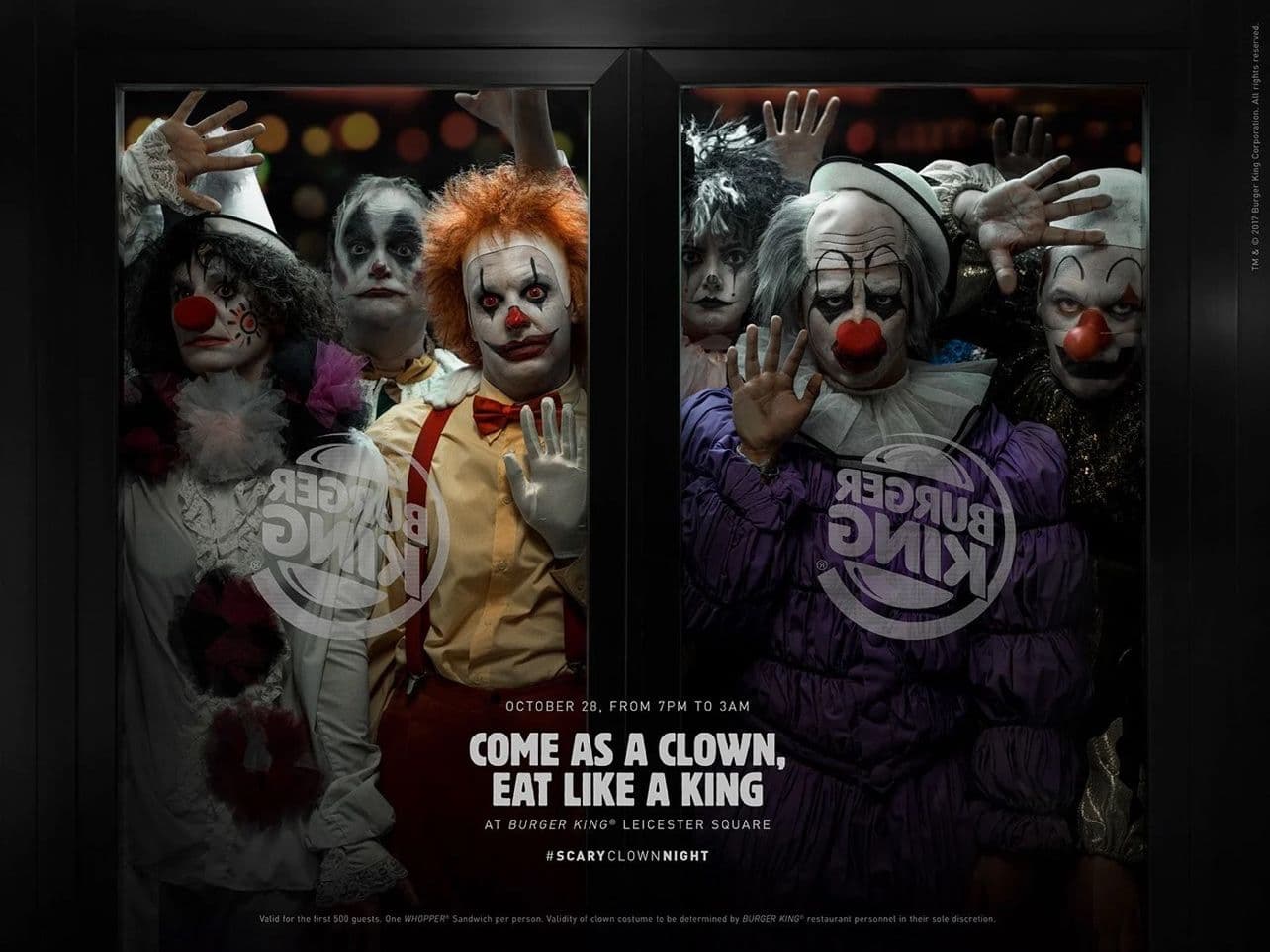


Some even introduce limited-edition Halloween products and recipes to entice consumers to partake in the spirit. Famous for their tagline “Taste the Rainbow,” Skittles embraced the Halloween spirit in 2019 with Zombie Skittles. This product offered five Halloween-themed flavors like Boogeyman Blackberry and Mummified Melon. However, the intriguing twist was that in each pack, one Skittle was the ‘rotten’ Zombie flavor, which pleasantly surprised consumers with a terrifyingly awful taste upon biting into it.
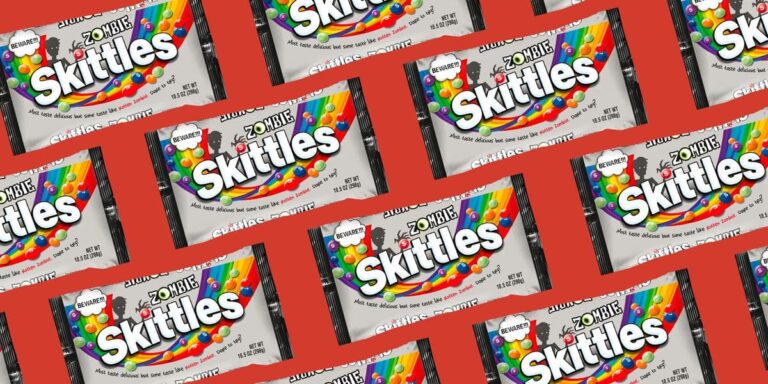
Some even introduce limited-edition Halloween products and recipes to entice consumers to partake in the spirit. Famous for their tagline “Taste the Rainbow,” Skittles embraced the Halloween spirit in 2019 with Zombie Skittles. This product offered five Halloween-themed flavors like Boogeyman Blackberry and Mummified Melon. However, the intriguing twist was that in each pack, one Skittle was the ‘rotten’ Zombie flavor, which pleasantly surprised consumers with a terrifyingly awful taste upon biting into it.

Halloween also serves as the perfect occasion for product relaunches, reviving existing products without the necessity of menu alterations or new introductions. This approach has been embraced by various food companies over the years, with even fast-food giant McDonald’s introducing a fresh perspective on their existing items through spooktacular print ads.

Halloween also serves as the perfect occasion for product relaunches, reviving existing products without the necessity of menu alterations or new introductions. This approach has been embraced by various food companies over the years, with even fast-food giant McDonald’s introducing a fresh perspective on their existing items through spooktacular print ads.

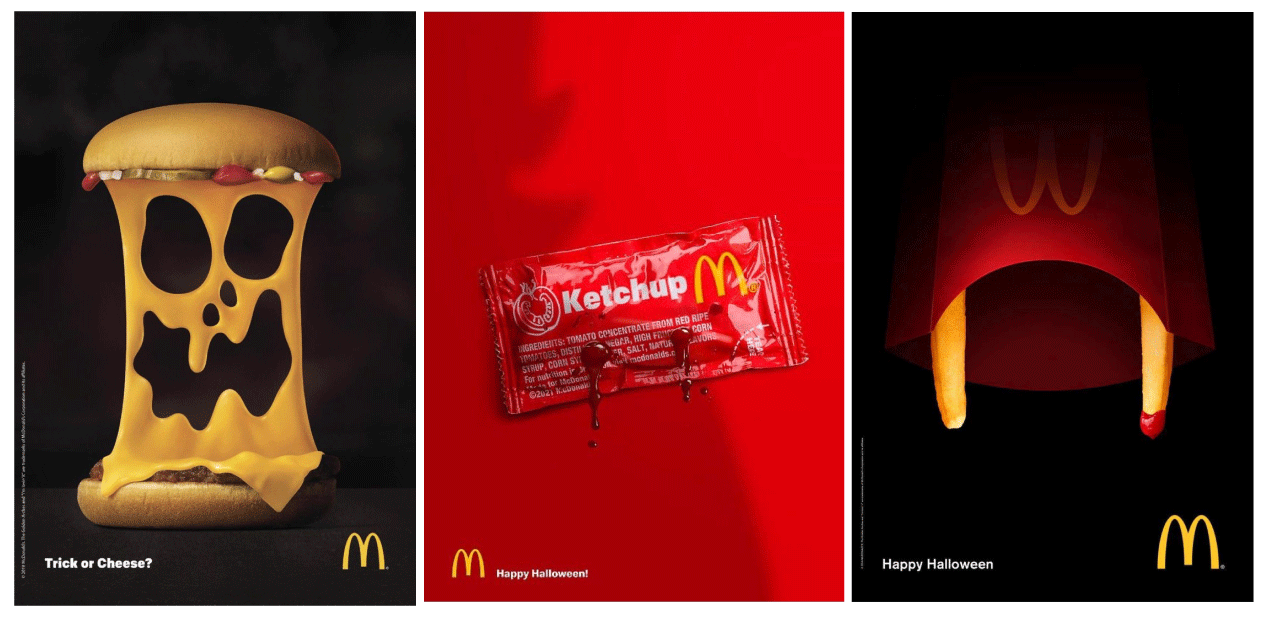
By narrating a story, a brand can breathe life into its products or services, placing them in a memorable context and rendering them more engaging. Regardless of your product or service, storytelling remains the linchpin for consumer attention, and Halloween offers the perfect stage for spine-tingling narratives.
A great example of this is Burger King, who teamed up with Alfonso Gomez-Rejon, one of the directors of “American Horror Story,” to create a short horror film, along with Halloween-themed packaging, to promote their seasonal treats: the Ghost Pepper Whopper and Ghost Pepper Chicken Fries. By seamlessly weaving these products into a horror story, Burger King didn’t just sell a product; they offered an experience, evoked emotions, and established a connection.
A great example of this is Burger King, who teamed up with Alfonso Gomez-Rejon, one of the directors of “American Horror Story,” to create a short horror film, along with Halloween-themed packaging, to promote their seasonal treats: the Ghost Pepper Whopper and Ghost Pepper Chicken Fries. By seamlessly weaving these products into a horror story, Burger King didn’t just sell a product; they offered an experience, evoked emotions, and established a connection.
Halloween is the season when ghosts come out to play, and with them come boundless opportunities for businesses to thrive throughout October. From innovative packaging design to captivating storytelling, Halloween provides a distinctive platform for establishing memorable connections with consumers and enhancing sales. In essence, Halloween is more about the “trick” in business than the “treat,” where creative marketing strategies abound.
Receive news from CBA!
© CBA DESIGN 2021
Privacy Overview
| Cookie | Duration | Description |
|---|---|---|
| aka_debug | This cookie is set by the provider Vimeo.This cookie is essential for the website to play video functionality. The cookie collects statistical information like how many times the video is displayed and what settings are used for playback. | |
| pll_language | 1 year | This cookie is set by Polylang plugin for WordPress powered websites. The cookie stores the language code of the last browsed page. |
| Cookie | Duration | Description |
|---|---|---|
| _gat | 1 minute | This cookies is installed by Google Universal Analytics to throttle the request rate to limit the colllection of data on high traffic sites. |
| YSC | session | This cookies is set by Youtube and is used to track the views of embedded videos. |
| Cookie | Duration | Description |
|---|---|---|
| _ga | 2 years | This cookie is installed by Google Analytics. The cookie is used to calculate visitor, session, campaign data and keep track of site usage for the site's analytics report. The cookies store information anonymously and assign a randomly generated number to identify unique visitors. |
| _gid | 1 day | This cookie is installed by Google Analytics. The cookie is used to store information of how visitors use a website and helps in creating an analytics report of how the website is doing. The data collected including the number visitors, the source where they have come from, and the pages visted in an anonymous form. |
| vuid | 2 years | This domain of this cookie is owned by Vimeo. This cookie is used by vimeo to collect tracking information. It sets a unique ID to embed videos to the website. |
| Cookie | Duration | Description |
|---|---|---|
| IDE | 1 year 24 days | Used by Google DoubleClick and stores information about how the user uses the website and any other advertisement before visiting the website. This is used to present users with ads that are relevant to them according to the user profile. |
| test_cookie | 15 minutes | This cookie is set by doubleclick.net. The purpose of the cookie is to determine if the user's browser supports cookies. |
| VISITOR_INFO1_LIVE | 5 months 27 days | This cookie is set by Youtube. Used to track the information of the embedded YouTube videos on a website. |
| Cookie | Duration | Description |
|---|---|---|
| CONSENT | 16 years 7 months 21 days 10 hours | No description |
| cookielawinfo-checkbox-functional | 1 year | The cookie is set by GDPR cookie consent to record the user consent for the cookies in the category "Functional". |
| cookielawinfo-checkbox-others | 1 year | No description |